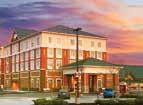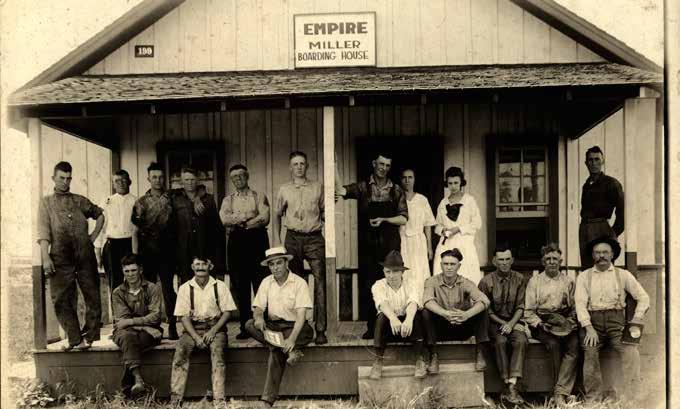
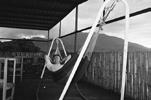



t the time of this publication, the stubborn snowbanks will be melting, and temperatures will be rising, influencing Mainers to head outside and celebrate the start of a new season. As for residents/visitors to Western Maine, this vast region (which is larger than New Hampshire and Vermont combined) offers dozens of lakes/ ponds as well as 14 mountains over 4,000 feet that provide opportunities to “stretch one’s legs” and get back to nature. In this regard, there are several areas to explore, with a unique event thrown in just for fun.
First, there is the Northern Forest Canoe Trail (NFCT). Completed in 2006, this 740-mile water trail begins at Old Forge, New York, and ends at Fort Kent, Maine, following the traditional travel routes used by Native Americans, settlers, and guides. In fact, it is the longest inland water trail in the country, which consists of 23 rivers/steams, 59 lakes/ponds, and 65 portages. The opportunities for paddlers are endless, ranging from a day trip or weekend getaway to an end-to-end excursion over a month. Best of all, accommodations are in your control, ranging from primitive campsites to charming bed-and-breakfasts. More information can be found at www.northernforestcanoetrail.org

Second, there is the High Peaks region in Franklin County, which is home to 10 of Maine’s 4,000-foot mountains, including Crocker, Saddleback, and Sugarloaf. It has more than 21,000 acres above 2,700 feet, with the Appalachian Trail passing through 32 miles of the area. A full hiking guide can be found at www.400footers.com. For those who prefer taking it all in from the comfort of a car, there is the Maine High Peaks Scenic Byway, which begins in Kingfield, travels along Route 27 all the way to the Coburn Gore border crossing into Canada. It winds along the Carrabassett River with views of Mount Abraham, the Bigelow Range, Chain of Ponds, and Sugarloaf Mountain. More information can be found at www.mainesnorthwesternmountains.com
Third, there is the Bethel Area Driving Tour. This 67-mile drive departs from Bethel and travels through the towns of Newry, Hanover, Rumford, Andover, and Upton. Along the way, there are 10 different points of interest, including covered bridges, pristine lakes, waterfalls, and of course, mountain views. More information on this drive (as well as others) can be found at www.bethelmaine.com/scenic-drives/.
Finally, there is the 36th Annual Sugarloaf Reggae Festival on April 11–14,
2024. This four-day event offers plenty of music and non-stop parties at the base of Sugarloaf Mountain. Specifically, there are two nights of music in the King Pine room, two days of outside entertainment on The Beach, three nights of music in The Widowmaker, and several reggae DJs at Bullwinkle’s. Tickets can be purchased at www.sugarloaf.com/reggae-fest.
In light of this month’s region, let me close with the following mountain-inspired jest: A politician, a doctor, and an engineer were nearing the summit of Mt. Everest. As they traversed a steep ledge with a 7,000-foot drop, the rope started to fray. With the doctor in the lead, he wrapped the bottom part of the rope around his hand and said, “Everyone hang on tight!” Then, the engineer said, “I will take the rest of this rope and loop it through a carabiner to create a pulley system to hold us!” As all three men desperately held on to the rope, the politician in the rear said, “You two are amazing! A doctor can selflessly save lives, while an engineer can create innovative things. What am I? I’m a useless politician who only gives speeches.” As he shed a tear, the other two were so touched that they started clapping.



It is one of those wonderful lazy summer days in Maine. The sun is high and a few puffy white clouds are all that stand between heaven and earth. It is the kind of day that is made for young boys to explore, and that is exactly what two were doing on the outskirts of Paris, Maine. The two have decided to explore the heavily wooded area around Mount Mica, just for something adventurous to do and just because it was there. It is the kind of thing boys do.
And so one of the most exciting discoveries in Maine began. A discovery that would eventually result in tourmaline being adopted as the official gem of the State of Maine. It was also a discovery that would make one of the boys, Gus Hamlin, very wealthy. Dr. Augus-

tus Hamlin — or Gus as he was known to his childhood friends — would eventually become president of the Mount Mica Company, a recognized authority on tourmaline and owner of the most



extensive tourmaline collection in the world.
The discovery of tourmaline at Mount Mica in Paris by two boys in 1820 is the stuff of legend. It ranks with the discovery of the Lascaux Caverns in southern France by a boy looking for a lost sheep or the entrance to Carlsbad Cavern being found by cowboys looking for cattle. And, the fact that Gus Hamlin had chosen to go exploring that particular day with a friend rather than his brother Hannibal, who would later be a governor of Maine as well as Vice President of the United States, simply adds to the legendary nature of the discovery.
Tourmaline is considered the crown of American gems by gem enthusiasts,
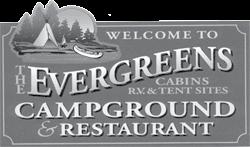
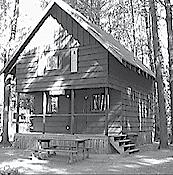

and Maine tourmaline is equal to or superior to that found in such exotic locations as Brazil or the Himalayas. The mineral ranges through almost all of the primary colors from black to white, including varying shades of red, green, and blue. There is even a highly-prized watermelon tourmaline that is especially coveted for pendants, rings, and pins.
The particular summer day in 1820 that Gus Hamlin and his friend went exploring around Mount Mica resulted in the boys finding some thirty tourmaline crystals. It also resulted in drawing national and international attention to Paris. In addition, gems from Mount Mica would mysteriously disappear only to reappear even more mysteriously.
Within the short period of a few months, over half of the crystals the boys found disappeared. Several years later they surfaced, this time in the Habsburg Imperial Cabinet of Minerals in Vienna.
Specimens of Mount Mica tourmaline also began to appear in college and university collections.
In 1826 Professor Charles Shepard of Amherst College visited Mount Mica. He collected what are now considered to be some of the finest specimens of tourmaline in the world for the Massachusetts college. Several of them he cut to gemstone quality. These include a grass-green gem one inch by two-thirds inch, a deep red gem of about the same size and a somewhat smaller white gem.
Harvard University has a forty-one ounce Mount Mica gem that is ten inches long and a two and one-quarter inches wide. Harvard also has what is considered the most remarkable example of tourmaline in the world. This is a gem that is clear white at the top and shades to a smoky white at the base. When viewed from the side, however, the center appears as a crimson streak tipped at either end by green. These
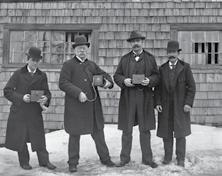

two gems were found at Mount Mica in 1886 and 1869 respectively.
The earliest records in existence indicate that the first commercial mica mining operation in Maine began at Mount Mica in 1871. However, the operation quickly changed to concentrate on tourmaline and other more valuable gems.
By 1900 Tiffany and Company was the major buyer of Mount Mica tourmaline. At this time, their chief buyer estimated that the company had purchased fifty thousand dollars worth of tourmaline from Augustus Hamlin’s Mount Mica Company. In 1893 Tiffany purchased one crystal for the then unheard of price of one thousand dollars. Four years later the company purchased a gem of almost eighty carats, which at the time was considered the foremost specimen of tourmaline ever found.
During this period Augustus Hamlin was amassing at his Bangor home what was considered the finest tourmaline (cont. on page 6)


(cont. from page 5)
collection in the world. This collection included the most exquisite specimen of blue or sapphire tourmaline known. The gem had actually been reconstructed, as it had been fractured into five pieces at the quarry. In the early 1900s Harvard acquired most of Augustus Hamlin’s collection.
The Mount Mica discovery was not the only one of its kind in the Paris region. In 1862, near Mount Apatite on the Auburn-Minot line, a boy by the name of Lane picked up what he first thought was a piece of green glass. For some reason he decided to show it to Dr. Luther Hill. Hill correctly identified it as tourmaline. By the end of the nineteenth century Mount Apatite had become the second most important source for tourmaline in Maine.
The Newry tourmaline deposit is a recent discovery and one of the most significant in the state. It was made

in the early 1970s when several large pockets of tourmaline were found at the Dutton Mine. Since that time, huge quantities of red and green tourmaline have been taken from the mine. One of these, a ten inch green gem called the “Jolly Green Giant,” is on display at the Museum of Natural History in Washington.
As a fitting tribute to the State of Maine having adopted tourmaline as the official state gem, the Maine Retail Jewelers Association presented a necklace of Newry tourmaline to the state in 1975. This is especially fitting, as the first great necklace of Maine tourmaline, the Hamlin Necklace, was given to Harvard University along with the rest of Augustus Hamlin’s Mount Mica collection.

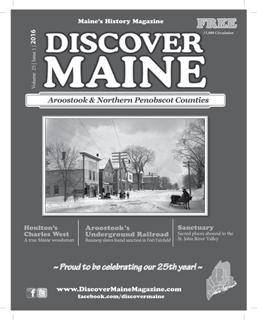










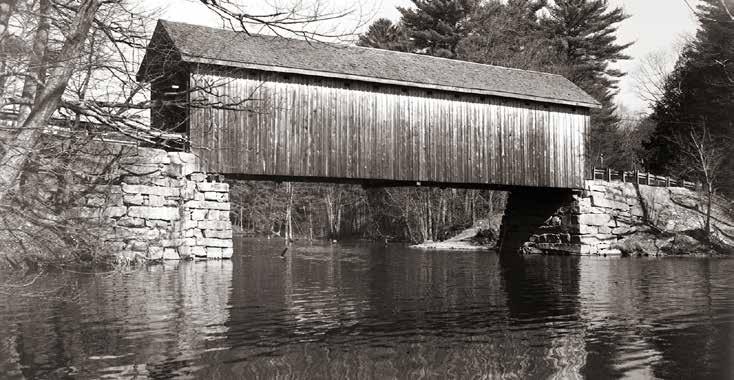









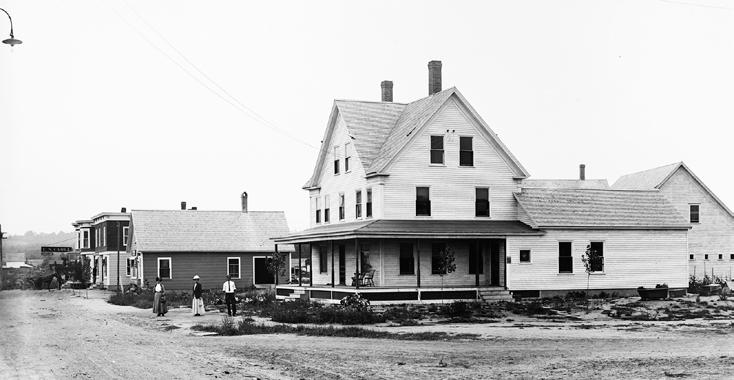



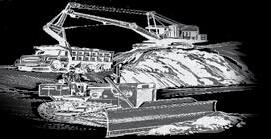
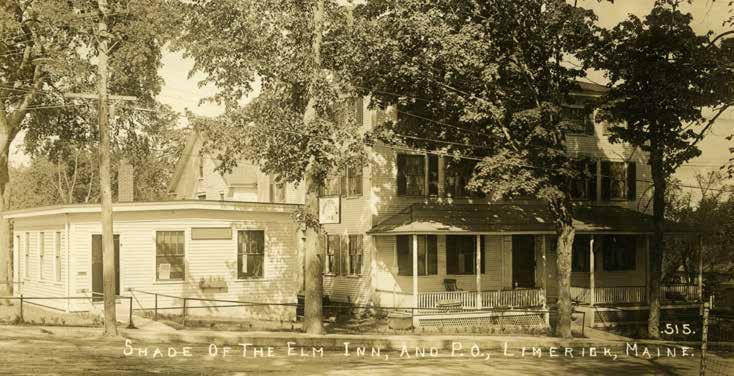



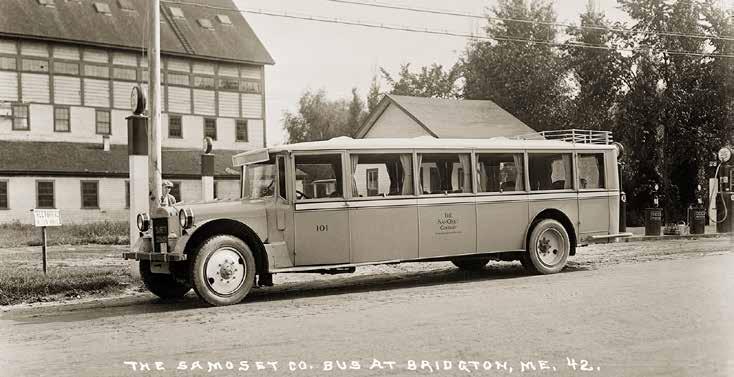





For over a century and a half, from the late 1800s to this day, author C. A. Stephens has captivated millions of fans from all around the world. Stephens was first published in 1870 and went on to write 31 books, and over 2,500 short stories. Most of his stories were written for the family magazine The Youth’s Companion. The magazine was published in Boston, Massachusetts and was one of the most widely read periodicals of its day. Stephens’s career would span almost 60 years, and he would go on to become one of the most famous and adored writers of his time.
Stephens was born in 1844 and lived nearly his entire life in Norway


— Norway, Maine. Although he traveled the world extensively, there was no place he would rather be than in his beloved hometown. He often wrote about his family and friends, his oneroom schoolhouse, and the home of his grandparents, the Old Squires Farm. But more than anything, he cherished his adventures on the shores of Norway’s Lake Pennesseewassee. Stephens once wrote of the lake, “Away downeast in the Pine Tree state, there is a lake dearer to my heart than all other waters of this fair earth. For its shores were the scenes of my boyhood, when life was young and the world a romance still unread.” Many years later, the shoreline of this same lake would be-





come the summer residence of Norman M. Chew. Norman spent his entire life as a collector, enthusiast, benefactor, and historian of C. A. Stephens.
Norman was born in New Jersey to Milton and Mary Chew on January 18, 1908. At the time of his birth Mary was suffering from tuberculosis. This condition caused her to have a very difficult pregnancy that put both Mary and her unborn child in grave danger. In the early 1900s, very few people survived tuberculosis and it was estimated that 450 Americans died every day from the dreaded disease. Sadly, Mary was one that did not survive. She died shortly after Norman was born. The attending physician had the heart wrenching responsibility of informing the family that the newborn baby would also not survive.
Norman’s grandmother, Beulah Locke Chew, refused to accept the doctor’s prognosis. With Norman’s mother gone, Beulah took full respon-


sibility for his care and was determined to nurse her grandson to good health. Beulah built a homemade incubator in a dresser drawer that controlled Norman’s environment, which in turn allowed his vital organs to fully develop and save his life. Without Beulah’s ingenuity, Norman surely would have died.
Buelah continued to care for Norman and began to read to him at a very young age. She was a subscriber of the weekly magazine The Youth’s Companion. Week after week as the magazine arrived, Buelah would be sure to share the stories with Norman. He especially liked those written by C. A. Stephens. When Norman was fourteen years old, he began to collect copies of The Youth’s Companion along with anything else associated with Stephens. This hobby would lead Norman to a fascination of his favorite author that would last the rest of his life.
In 1929 when Norman was in his

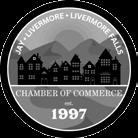
early 20s, the world was heading into the Great Depression. At the time, Norman was employed by a florist in Woodbury, New Jersey that was struggling to stay in business. As the Depression progressed and the economy worsened Norman decided to leave the struggling florist and open his own flower shop. Norman M. Chew Florist opened its doors in Blackwood, New Jersey in 1934. At the time, Norman was just 26 years old.
In a few short years, Norman’s business was doing well. Even though he was self-employed and raising a young family, he found time to continue his fascination with Stephens. In 1938 Norman took a bus from Camden, New Jersey to Norway, where he would walk the countryside and visit all the locations that Stephens made famous in his writings. He wanted to personally experience the life of the author that had brought so much joy to his childhood. After many years of summer visits to (cont. on page 14)

(cont. from page 13)
Norway, Norman decided to purchase property on Lake Pennesseewassee. As fate would have it, he was able to locate a cottage with a view of the Stephens family farm. Norman and his wife Marie purchased the cottage and would spend the rest of their lives as summer residents of Norway. The couple spent countless hours sitting on their porch with a view of both Stephens’s childhood home and the Old Squires Farm. Along with a friend, Norman would one day purchase the Old Squires Farm, the subject of so many short stories written by Stephens.
Over the years, Norman added to his collection of writings and memorabilia, interviewed people that knew Stephens, and even met with his widow, the world-famous opera singer, Madame Minne Scalar. During his research of Stephens, Norman met and become lifelong friends with Reverend Ronald G. Whitney, a man fascinated with Stephens as much as he was.
Ronald Whitney was born in 1926 and raised in Newport, New Hampshire. Whitney’s childhood followed the same path as Norman’s did regarding his admiration of Stephens. Like Norman, he would visit Norway as much as possible to study the author’s life. After many years of research, Rev. Whitney wrote a book about the famous author. The World of C. A. Stephens was published in 1976. In the acknowledgements, Whitney stated that Norman had been of great assistance to him in his research for the book.
Norman would go on to spend the next twenty years promoting the memory of Stephens. He donated his vast collection of books, magazines and memorabilia to various scholars, libraries, and historical societies. This allowed anyone interested in Stephens to enjoy what he had collected for over 70 years.
By the mid-1990s Rev. Whitney’s book was becoming hard to find and

Norman became worried that the memory of Stephens would soon be lost to future generations. Therefore, in 1996 Norman, Marie and their sons Donald and David financed a commemorative edition of The World of C. A. Stephens The introduction to the book was written by well-known Maine historian Larry S. Glatz, where some of the information used here was obtained. With this edition, Norman’s dream of continuing the memory of Stephens would be secured for many years to come.
Six years after the Chew family issued the commemorative edition, Norman M. Chew passed away on February 12, 2002, at the age of 94. Norman’s legacy lives on to this day due to his lifelong admiration of Stephens, and his desire to keep his memory alive. The commemorative edition of Rev. Whitney’s book is still available to anyone interested in learning about the fascinating life of C. A. Stephens.

Congratulations, Tom, from your friends at
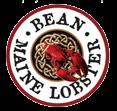

The name Stanley usually brings to mind the fabulous Stanley Steamer, the motor car that set innumerable land speed records took part in hill climbs up Mt. Washington and Pikes Peak and generally made a name for its millionaire developers the Stanley twins. Few realize, however, that the Stanley Steamer was more of a hobby than a business for the flamboyant brothers and that their real pioneering fame rests on their innovations and inventions in the field of photography. Fewer still know that it was the twin’s sister, Chansonetta Stanley Emmons, who was the real ground breaker of the three siblings, for she was not only one of the first women to be recognized as a professional photographer, she was the

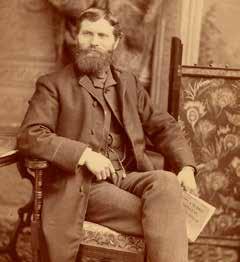
first to treat photography first and foremost as an art form.
The photographic career of the three
Stanleys begins in Lewiston when Francis Edgar (F.E.) and Freeland Oscar (F.O.) Stanley began manufacturing dry plates there some ten years after the close of the Civil War. Around that time or a bit later, Chansonetta Stanley, the twin’s younger sister caught the photography bug from her brothers. Initially the younger Stanley found her subjects in the Lewiston area so that she could use her brother’s facilities and equipment there, but as her brothers’ business expanded to include a factory in Montreal, she too moved beyond her home state. Today the Photographic Historical Society of Canada recognizes Chansonetta Stanley Emmons as one of Canada’s pioneers of photography. In addition, she is recognized in much


the same way in the American South for her work in capturing the rural character of a time that had already almost faded from memory as well as in the West where she captured the grandeur of the Rocky Mountains of Colorado.
The Stanley siblings were all born in Kingfield. The twins, who their neighbors simply knew as Frank and Freel, were two of the most gifted inventors and innovators of turn of the twentieth century America. In fact their only counterparts would be the Wright brothers with whom they bear a number of startling comparisons. The Wrights, like the Stanleys, were twins. Both sets of brothers were in on the beginning of the transportation revolution. Both did much of their early work in bicycle plants. And, sadly, a Stanley and a Wright would each lose their life due to one of their creations. The comparison stops there for the most part, however, for the work of the Stanley’s fell into a much broader spectrum of endeavor.
The Stanley’s real sphere of innovation was photography. In fact they made their fortune developing and manufacturing photographic equipment. Among other things F.E. developed the first mass marketed airbrush for use by portrait photographers and together the two patented a dry pate coating machine. It was F.E. with his development of airbrush techniques for portrait work, who most influenced Chansonetta’s early development as a photographer.
The Stanley twins were born in Kingfield in 1849. Chansonetta was born there in 1858. The twin’s first formal employment was as teachers but with the patenting of their photographic equipment, the two decided to launch out into the business world. In 1874, F.E. and F.O. formed a partnership and began manufacturing dry plates in Lewiston and later Montreal.
Chansonetta began her career as a photographer capturing scenes of rural




Maine life. In fact capturing the character of rural life and pursuits is one of the dominant themes of her work. Her “Shelling Corn,” which was done around 1900, is a typical example of her ability to evoke the past by treating her subjects with a perspective that evokes both a feeling of nostalgia as well as whimsy. The central figure, an old man with a long beard, sits in a shadowy barn bent over his task by tradition as well as years. “Shelling Corn” was so popular that it was reproduced as an oil painting and sold as a slide. Rural Maine and rural themes were to serve as just one of Emmons’ inspirations, however. When her brothers began making regular trips to their plant in Montreal, Chansonetta seized on the opportunity to begin making travel photographs.
In 1883 the twins incorporated as the Stanley Dry Plate Company. Then in 1889 they moved their base of operations to Watertown, Massachusetts to be (cont. on page 18)
(cont. from page 17)
closer to suppliers as well as markets. It was in Watertown that the Stanley’s got the automobile bug. However, by that time they were able to afford their new passion. In 1905 the twins sold the Stanley Dry Plate Company to Eastman Kodak and formed the Stanley Motor Company, with Frank as president.
Chansonetta Stanley Emmons made Dorchester, Massachusetts her home for most of the latter part of her life. From here she entered exhibitions and camera club competitions. However, because of her brother’s largesse, she was able to travel. Out of this came her work in the South, which today is part of the collection “Documenting A Myth: The South as Seen By Three Women Photographers: Chansonetta Stanley Emmons, Doris Ulmann, Bayard Wootten, 1910-1940.”
In the early 1900’s F.O. Stanley was diagnosed with tuberculosis and as treatment his doctor recommended


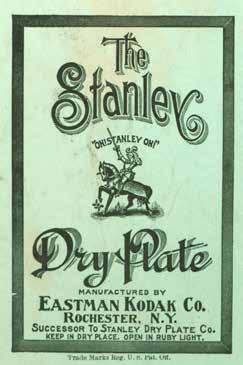
a trip to the mountains of the American west. Out of this came the Stanley Hotel in the Estes Valley of Colorado. The Rockies provided a natural setting for the twins to showcase their automobiles in road races and rallies. They also provided the impetus for Chansonetta Emmons to move into landscape photography. Her work in the Rockies was to serve as a model for Ansel Adams. Today their work is often shown in juxtaposition and calendars showing western scenes often feature the work of both.
F.E. Stanley died from injuries incurred in an automobile accident on 1918, the same year that the twins sold the Stanley Motor Company. Thanks to the beneficial climate of the Rockies, however, F.O. Stanley lived to be ninety-four, dying in 1940.
Chansonetta Stanley Emmons died in 1938. In the late 1920’s and early 1930’s, her work as an innovator in the



field of photography began to win her a certain degree of recognition as she was asked by a number of prestigious museums to lecture. Her presentations included a glass lantern slide show of her hand-colored photographs.
In the long run Chansonetta may prove the most influential of the Stanley siblings. Today she is being rediscovered by new generations of photographers who look upon her as an avant-garde practitioner of pictorialist photography who sought to apply the principles of painting to a new art form. In fact, samples of her work have been used as examples in books on what is now considered the cutting edge in photography, digital photography.
Perhaps it may be said one day that thanks to the Stanley siblings Lewiston is a birthplace of the ‘art’ of photography. Lewiston Raceway action shot from February 15, 1981. Item # LB2005.24.16640 from the Boutilier collection and www.PenobscotMarineMuseum.org
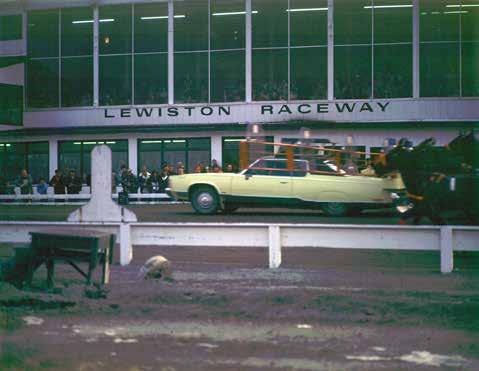






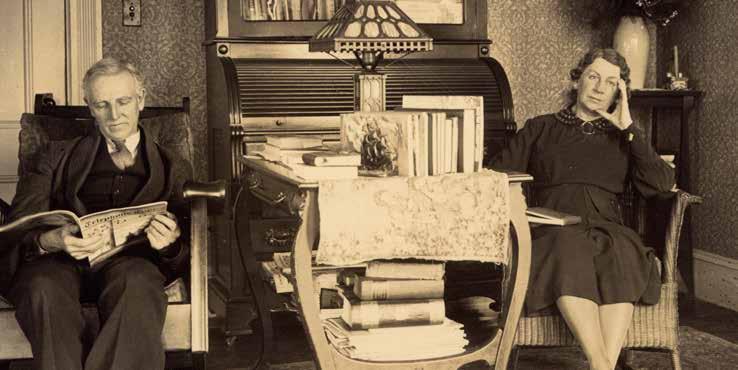





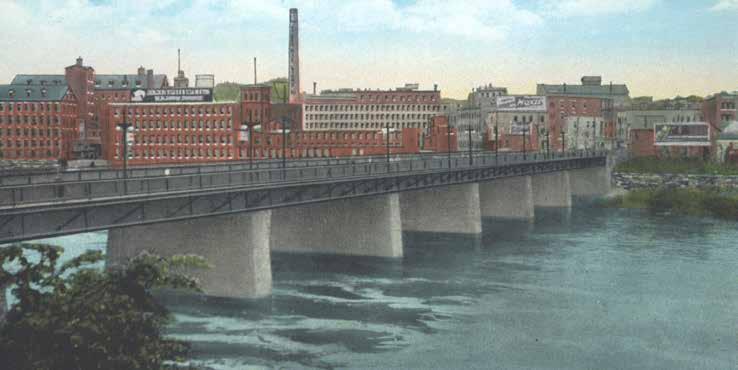







Maine, much less Auburn, noted as one of the state’s first industrial centers, is hardly a place where one would expect to find a belief in hexing and hex signs. When one thinks of hex signs, especially those on barns, what usually comes to mind is Pennsylvania where the Dutch are famous for their colorfully painted barns with hex signs to keep away evil spirits or bring good luck. Yet, Auburn once had a woman who was believed to be capable of hexing someone or something. Her name was Aunt Molly Merrill.
To say that what Aunt Molly Merrill did was to cast a hex is not quite the same thing as saying she was a witch.
There are plenty of stories of witches in Maine who cast spells, but the story of Aunt Molly casting hexes seems to be a one-of-a-kind tale.
Usually hexing is looked upon as a milder form of witchcraft. To say that bringing about the death of a yoke of oxen, as one of the tales about Aunt Molly alleges, does seem to stretch the definition of “mild” a bit. Another distinction between hexing and witchcraft is the fact that hexing is a good deal more modern than witchcraft — be it the black witchcraft associated with Satanism or the white witchcraft of the Druids of the British Isles or the Wiccans.
The first colonists brought a belief in

witchcraft with them when they came to the New World. It is a belief that peaked with the Salem witch trials and then disintegrated as a commonly held set of assumptions in the early 1700s. The belief in hexing and the display of hex signs did not become prevalent until the mid-1800s. And, unlike witchcraft which could affect any aspect of life, hexing was generally specific to agricultural pursuits, which is why hex signs were placed almost exclusively on barns.
Aunt Molly Merrill was married to an Auburn farmer. Although factual information about Aunt Molly is sketchy at best, her actual name is usually given as Mary and that of her husband as



Daniel. By all accounts, Aunt Molly was an irascible character noted for taking her temper out on her neighbors as well as her long-suffering husband.
Besides the fact that Aunt Molly had an irritable nature and is described as being exceptionally unattractive, which seem general traits of most witches, she had a few other characteristics in common with her darker predecessors. One of those similarities was her name. According to one authority, no witch has ever had an Anglo-Saxon name. Their names are either Celtic, Latin, or eastern Mediterranean in origin. They range from Anne and Joan, through Mary and Margaret, to Rebecca and Elizabeth for women. Benjamin, Augustus, and Timothy are typical for males. Molly is a diminutive for Margaret, which is another possibility for Aunt Molly’s real name, and, of course, Mary would be right on target.
In line with hexing in general, how-
ever, Aunt Molly never directly caused harm to one of her victims. Stories about her indicate that she directed her dissatisfaction on her victims’ animals, crops, or produce. She was variously blamed for curdling milk, souring butter, stopping hens from laying, making cattle barren, and drying up cows.
The sorts of mishaps blamed on Aunt Molly that are listed above are typical minor farm catastrophes of the day. However, it must be realized that the early to mid-eighteenth century when Aunt Molly lived in Auburn was a far cry from the Auburn of today.
The village of early Auburn consisted of a dozen or fifteen houses. Littlefield’s Tavern was probably the busiest place in town for it was there that farmers from outlying districts came to exchange news. It wasn’t a rowdy place by any means, however, as the town fathers saw nothing remarkable about allowing the school to hold classes right
next door. The town’s doctor, Tobias Purinton, one of the foremost citizens of early Auburn, lived at the town’s other tavern, Keene’s. Dr. Purinton was thought of as one of the great medical experts of the time because he raised his own leeches for drawing blood. This is the background for the period in which Aunt Molly Merrill lived.
The most famous tale involving Aunt Molly involves that of her killing a neighbor’s yoke of oxen. Actually, the oxen had first belonged to her husband. As the story goes, Aunt Molly was so opposed to her husband selling the yoke of animals that she hexed them. The day after they were sold the neighbor went into his barn to find them dead without a mark on them. Of course, the blame was placed on Aunt Molly.
Was Aunt Molly a convenient scapegoat for the unexplained and precipitous death of the oxen? We will never know. It is possible that she poisoned (cont. on page 24)
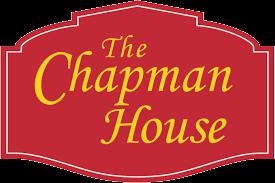







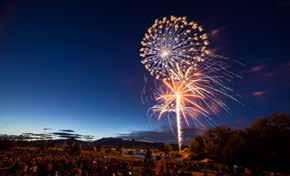







them. However, Maine, like other sections of the country where the Dutch, as Germans were commonly called, settled, did have a people who believed in hexes. Perhaps that is the best explanation for the strange Maine tale of Aunt Molly Merrill. That and the fact that Aunt Molly was an irritant to many in Auburn of that period.






When Jabez Ricker answered a door knock in 1794, travelers asked if they could stay overnight at his Bakerstown (future Poland) home. Such hospitality continues 230 years later through the modern Poland Spring Resort. And the Poland Spring Preservation Society recalls much of that history via the Maine State Building and All Souls Chapel. Ricker farmed on Ricker Hill in Poland, which became a town in 1795. He opened the Wentworth Ricker Inn in 1794. Fifty years later, grandson Hiram Ricker spent time overseeing farm operations. He drank water from a farm spring for ten days. Believing the water had cured his long-term dyspepsia, he started sharing the water. His family
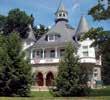
first sold it commercially in 1859; thus, was born Poland Spring Water.
Ricker’s family opened the Poland Spring House in 1876 to accommodate guests coming to experience the spring water’s healing attributes. The hotel was the centerpiece of the Poland Spring Resort, which added an Arthur Fenn-designed golf course in 1895. Twelve years later Hiram Ricker and Sons Co. constructed a facility to bottle spring water.
Meanwhile, architect Charles Sumner Frost had designed the Maine State Building erected for the 1894 Chicago World’s Fair. Incorporating Maine granite, lumber, and slate, the Maine State Building stood in Chicago until bought by the Ricker family
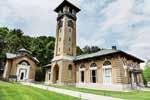
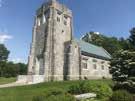
for $30,000. The family had the building dismantled and shipped to Poland Spring Resort. The reassembled building was dedicated on July 1, 1895.
Efforts to construct a resort church began in the 1880s and culminated with a September 1909 ground-breaking ceremony. Designed by architect G. Henri Desmond, the granite chapel had a slate roof, hand-painted windows, and a tile floor. The interdenominational All Souls Chapel opened in 1912.
The Ricker family constructed a modern bottling facility at the original spring in 1906-1907. Perrier later bought Poland Spring Water; after acquiring the facility, spring, and surrounding land from Perrier, Nestle spent more than $3 million to restore



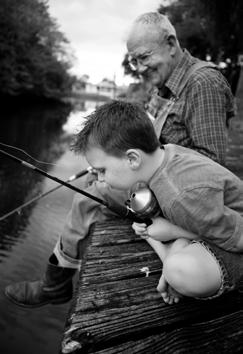

The th ing about eye disease is, you may n o t know you have it. Some conditions are asymptomatic, and by the time symptoms do present we’re left with fewer options. An annual examination at GFVC can ensure that we diagnose any latent disease with cutting-edge technology. We’ll also check your vision and adjust your prescription. And while you’re here, you can check out the latest designer frames.
DAVID L. GUISELEY, O.D. • JONATHAN F. COOK, O.D. In Gray 207.657.4488 and Windham 207.894.2174 office hours /appointments: visit grayfamilyvision com



(cont. from page 25)
the bottling facility and turn it into the Poland Spring Bottling Museum, accessible from the resort’s property. Blue Triton now owns the museum and a modern bottling plant on Route 122.
Poland Spring Resort passed through several owners’ hands since the Great Depression. Poland resident Saul Feldman bought the resort’s 5,000 acres in 1962. He built the Executive House, which became the Maine Inn. Saul brought Poland Spring national attention by hosting Sonny Liston when he trained to fight Cassius Clay in Lewiston. A film crew shot three Route 66 episodes (including one starring Joan Crawford) at the resort, Jack Parr frequently stayed there, and WMTW Channel 8 started broadcasting from the resort.
The federal government leased the Poland Spring House and other buildings for a Job Corps’ campus in 1966; it closed three years later. Maharishi Mahesh Yogi briefly leased the Poland Spring House in 1970.
A Lewiston resident, 16-year-old Cyndi Sievert, started working as a waitress at the Maine Inn during that time. Her parents were William and Margaret Sievert. The family moved frequently due to William’s work in sales. Born in Chicago, Cyndi lived in several states before her father was hired by Pioneer Plastics in Auburn.
With “$7,000 in his pocket and a car,” Mel Robbins arrived at Poland Spring Resort in May 1972, Cyndi said. Mel and his ten partners wanted


to develop the resort, but the project proved unfeasible. Mel then leased the Maine Inn with an option to buy. Business-savvy and hard-working, he advertised the popular $25 Weekend. The Maine Inn became “very profitable and very successful, and slowly over time we started taking over more buildings,” Cyndi said.
She and Mel fell in love; they married on May 4, 1975 (Mel’s birthday). In 1976 the Robbins’ took over the Lodge and the golf course. That same year, Jim Aikman was an anchor at Channel 8, which covered live the nighttime July 3, 1975 fire that leveled the Poland Spring House. Aikman later approached Saul about saving the shuttered Maine State Building and All Souls Chapel. Aikman “gathered together like-minded individuals to form” the Poland Spring Preservation Society in 1976, said Laura Brown, the society’s director of operations. The next year Saul and Mel transferred the
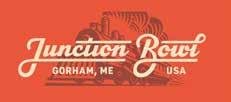


Maine State Building and All Souls Chapel to the society; Mel and Cyndi later donated two acres for a parking lot.
After Saul Feldman restored the Ricker Inn, “we took that over in 1982,” Cyndi said. That same year the Robbins’ purchased some 425 acres at the resort, which is now on the National Register of Historic Sites. Mel died in 2007; Cyndi is the resort’s owner.
The Poland Spring Preservation Society operates the Maine State Building and All Souls Chapel as the Poland Spring Preservation Center, open weekends from Memorial Day weekend to Columbus Day and five days a week in July and August. The Maine State Building contains various exhibits, including an art gallery. One room has artifacts and photos from the 1894 Chicago Fair. All Souls Chapel is available for weddings, concerts, and memorial services.
Hailing from Poland, Laura said

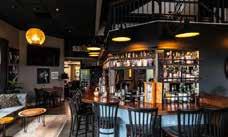



that “I’ve been on the property at Poland Spring since I was a year old.” Her grandmother cared for her while working as the preservation center’s administrative assistant. “I started giving tours when I was 12,” Laura said.
While pursuing a master’s degree in business management (with a concentration in hospitality) at Husson University, Laura “had to do a large project. I wanted to do something to tie in with Poland Spring.” Golf pro Arthur Fenn had lived in a cottage on Route 26. Cyndi Robbins asked Laura to convert the cottage into the Fenn Ice Cream Shop, and she managed the project through planning, construction, and the grand opening in May 2015.
“Our mission is to restore and preserve the two buildings,” Laura said, referring to the Poland Spring Preservation Society. “We want to continue showcasing the history for future generations.”






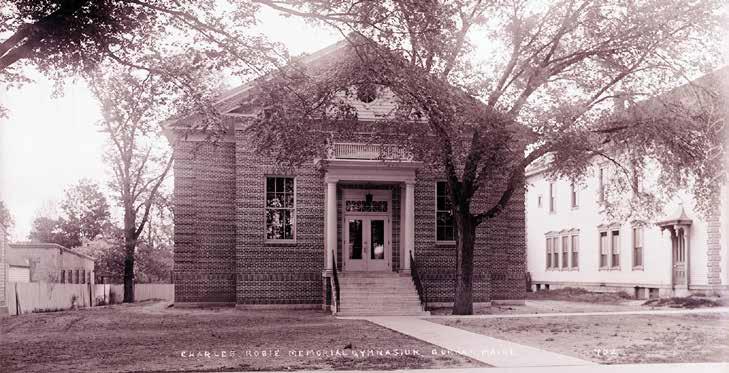








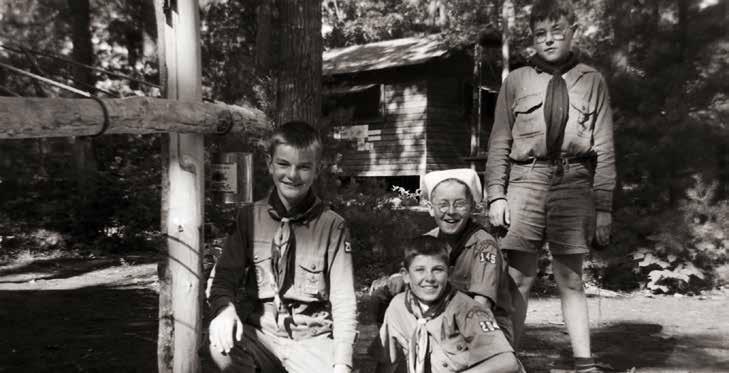















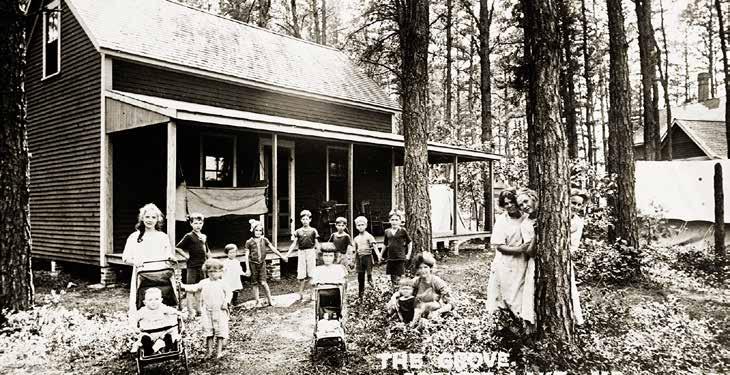




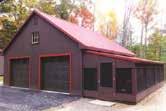

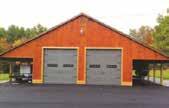

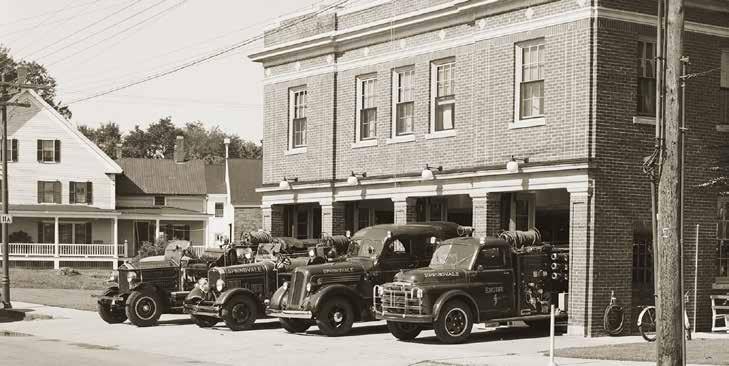




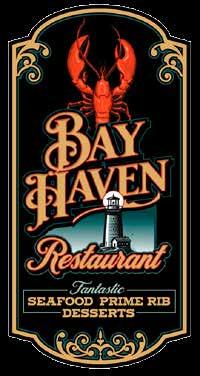
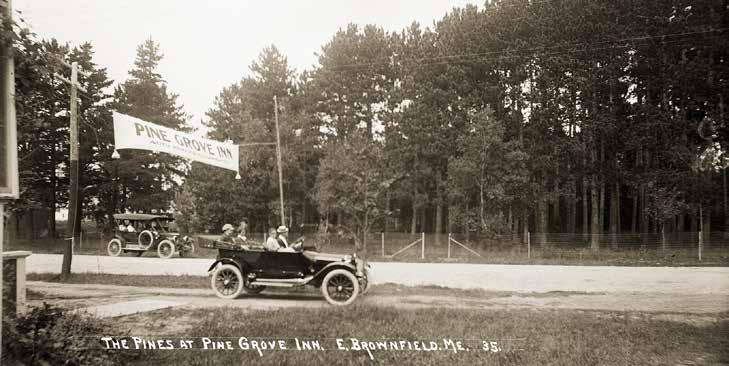

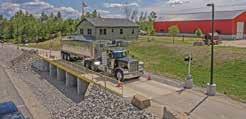





In the 1860s, a young boy of a farmer in West Bridgton attended the country school in his hometown and eventually public school in Portland. With his natural mathematical skills, he entered the Massachusetts Institute of Technology (MIT) and graduated with a bachelor’s degree in civil engineering. Over the next 50 years, he applied his engineering talents to design and build the Charles River Dam in Massachusetts, the Lake Spaulding Dam in California, the Holter Dam in Missouri, the Los Angeles Aqueduct, and portions of the Panama Canal, among others. Amazingly, without the full mathematical equipment available to today’s engineers, he was able to create,

by constructive shorthand, clear and dependable results.
John Ripley Freeman was born in West Bridgton on July 27, 1855. After graduating from MIT in 1876, he started his career as an assistant to Hiram Mills, the head engineer of the Essex Waterpower Company. Through this position, he became acquainted with other leading engineers of the day, including Charles Storer Storrow (known for designing and building the dam and textile mill complex in Lawrence, Massachusetts) and James B. Francis (known for inventing the Francis water turbine, which is the most common turbine in use today, with more than 95% efficiency).


In 1886, Freeman moved to Boston, Massachusetts, where he was appointed as the engineer-inspector of the Associated Mutual Fire Insurance Company, whose policies covered industrial structures. There, he became an expert in fire protection/prevention, especially regarding earthquakes. However, the field of hydraulics (i.e., the science concerned with the application of fluids in motion) was where Freeman excelled.
As stated earlier, at the personal level, he was able to arrive at the final result by simply using constructive shorthand, which seems unheard of among today’s generation. According to the Biographical Memoir of John Ripley Freeman (1935) by Vannevar Bush, “This was by no means guesswork: it was rather a function of his critical faculty, by means of which he could quickly find the soft spots in an engineering paper and would center on the essentials of any undertaking.” In
addition, “Thoroughness, almost to the point of skepticism, always forced him to review and test the findings of his predecessors and colleagues, that is, he was unwilling to accept others’ views at second hand.”
Regarding the latter point, Freeman frequently noted how far engineers had failed to consider geological formations in construction. Hence, he experimented using scale models, which resulted in the creation of the River Hydraulics Laboratory at MIT. His views in this field were also influential in the design of the River Hydraulics Laboratory in Vicksburg, Mississippi, constructed by the U.S. Army Corps of Engineers.
Within his team of engineers and laborers, Bush stated, “He set a stiff pace for others, but spared not himself. If he exacted hard stints from his helpers, he also inspired them, with enthusiasm and example. Amid a demanding job, he kept no working hours and scarce-
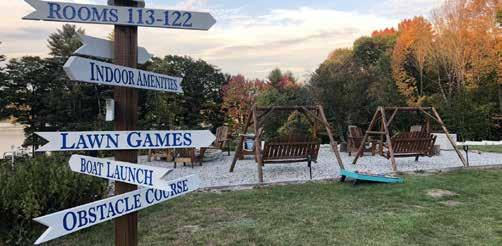
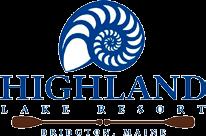
ly knew how to ‘call it a day.’ Meanwhile, his visits abroad “were not all diversion, since his itineraries always included the principal places where research work in hydraulics was carried out.” He then brought his findings back home for the benefit of American engineers. As for Freeman’s productivity over the course of his career, it raises the following question: How did he find the time to balance everything?
Out of his exhaustive list of projects, the following are several notable examples. First, according to his papers archived by MIT Libraries, “Freeman was active in diverse aspects of hydraulics, from understanding the geology of dam foundations to estimating the cost of alternative construction proposals. His records on dam design include: the San Pablo Dam in the East Bay of San Francisco; the Calaveras Dam in central California; the Hauser and Holter Dams in Montana; and the Wyman
(cont. on page 36)



(cont. from page 35)
Dam on the Kennebec River in Maine.”
Second, Freeman frequently asked his MIT classmate, William Otis Crosby, to help him with the geological analysis of a site, which was especially helpful for the Keokuk Dam in Iowa. This dam on the Mississippi River was one of the largest Freeman had designed. As stated by MIT Libraries, “The materials related to this dam, particularly the audit and progress reports, display Freeman’s approach to cost estimation and construction supervision. Other Keokuk materials include more than 1,000 photographs showing various stages in the construction of the spillways, turbines, and other portions of the dam.”
Third, regarding the Hetch Hetchy aqueduct for San Francisco, the records reveal the politics behind competing proposals for this water supply. For instance, in 1912, Freeman recommended damming the Tuolumne River in
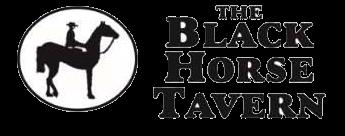
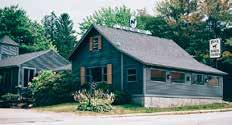

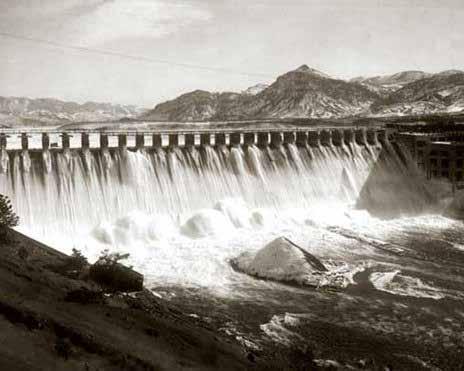


Yosemite National Park, approximately 170 miles east of the city. In this case, since the planned reservoir would cover public land, the proposal had to be approved by the U.S. Congress. According to MIT Libraries, “Despite the protests of John Muir and other naturalists, the plan was eventually accepted by Congress and approved by the city over other systems. Construction of Freeman’s system was finally completed in the fall of 1934 (two years after his death).”
Finally, Freeman conducted similar detailed investigations of water supply resources for the following cities: Los Angeles, California; Denver, Colorado; Hartford, Connecticut; Portland and Waterville, Maine; Baltimore, Maryland; Boston and Springfield, Massachusetts; Newark, New Jersey; and New York City. As stated by MIT Libraries, “As part of his work for the Boston Metropolitan Water Board be-
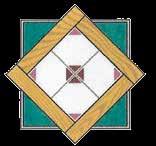
tween 1895 and 1891, he appraised mill property in the Boylston-Clinton area. These mills were endangered by a reservoir proposed for an additional water supply to Boston, now known as the Wachusett Reservoir.”
Regarding his fast-paced schedule, the following was taken from a letter that Freeman wrote to his son in November 1913 (note the breathless writing in this single sentence):
First, a day with the Board of Water Supply in New York City; an evening in Washington with certain city officials of San Francisco at a Hetch Hetchy conference; thence down to Knoxville, Tennessee, and in the midst of the land of feuds, where I spent two or three days studying some dam sites for the Aluminum Company, where we are planning for two dams much higher than anything built anywhere in the world; thence to Chicago to submit my cross-examination on the lake levels
case, as affected by the study for the erosion of the ledge by the current coming over the dam; thence for a day’s visit with your Uncle Hovey, while waiting for my Canadian friends to arrive with their private car; thence a two-day ride thru Minnesota, Dakota, and Canada, out to within one day’s ride from the Pacific Coast, while studying plans and blueprints on the way with the Chief Engineer and the Assistant to the President of the Canadian Pacific Railroad, relative to a dam for their great irrigation project, in which they are going to have more land served by the ditches of this one project than the total area of the State of Rhode Island.
Surprisingly, he still found time to serve as President of the American Society of Civil Engineers and the American Society of Mechanical Engineers. He was also Chair of the National Advisory Committee for Aeronautics during World War I. In the late 1920s,




(cont. from page 37)
Freeman established fellowships to send promising students/professors to cutting-edge hydraulic laboratories, for the purpose of exposing them to practices he believed would be useful in solving future river problems. One of these professors was Blake Van Leer, who invented the California pipe method for measuring water.
On October 6, 1932, Freeman died at his home in Providence, Rhode Island. He was buried at Swan Point Cemetery in Providence. Although his impact on the fields of civil engineering and hydraulics is obvious, perhaps Bush best summed up his life as follows: “His professional life of 56 years was crammed with useful and largely original work that was eagerly undertaken, and thoroughly and brilliantly completed. This won him the respect and liking of colleagues, the loyalty of co-workers, and grateful public appreciation.”
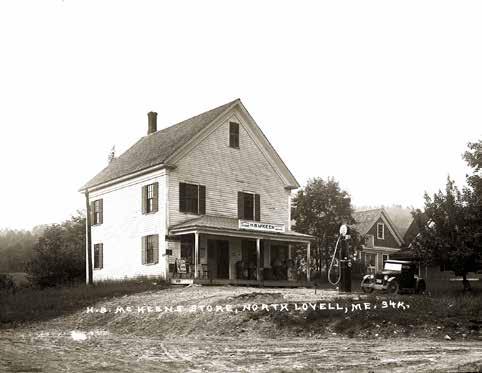






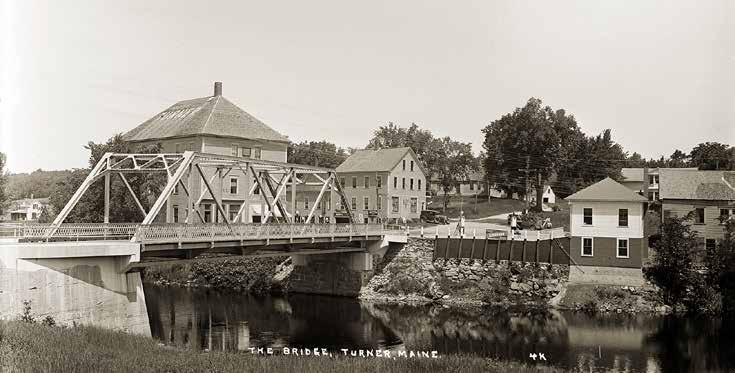







Up in the rolling hills of central Maine, alongside active farms and orchards sits an estate where time seems to stand still. Nearly equal distance from Bethel, Farmington, Augusta, and Lewiston, the Norlands is the family home of the distinguished Washburn family. I was fortunate this summer to be able to present a living history interpretation of the life of Major General Cadwallader Washburn, the fourth of eight sons and three daughters, born to Israel and Martha Washburn.
It was from this hidden gem of a
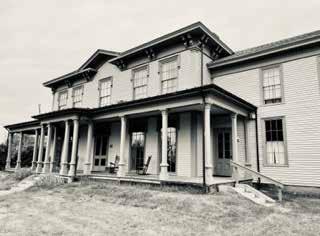
home, now a museum and living history center, that this family made its impact on the world. There were two governors from two different states (ME, WI), one senator from Minnesota, four congressmen (ME, IL, WI and MN),
two ambassadors (France and Paraguay), a Secretary of State, successful businessmen, a naval officer and a major general within this group. And not a whiff of scandal amongst ‘em! There were three sisters who proved to be just as industrious and family focused as the brothers.
And there were many people who strolled through these gates as adults who had come here as children. I could tell, as General Washburn engaged them in conversation, that memories were coming back. They remembered the farm and reenactments. And then there








were folks who had never been here before…from all parts of this country. They were fascinated to hear the tales of this family. They were amazed that this tranquil spot in Livermore had so much to offer.
The interpretive guides, in period costume, highlighted stories of Maine and of national importance throughout the main house. If you closed your eyes for a moment, one could almost conjure up the spirits of the Washburns talking politics or how the neighbors down the road were doing. And even though most of the members of the family sought their opportunities elsewhere, this was always home.
The interpreters made sure that everyone who arrived felt at home and they took great pains to ensure that the history being shared was well researched and thoughtfully presented. There were demonstrations in the kitchen and programs in the barn. If (cont. on page 42)





(cont. from page 41)
you wanted to know how rough farm life was “back in the day,” they were happy to oblige. Should you want to sit for a spell, you could listen to Mercy Lovejoy tell you of her life.
Lovejoy was a woman from the area who ended up living on the local poor farm after her family left her to her own devices. Interested in how the Washburn family helped shape debates, impacted the outcome of the Civil War, or changed how we eat our food? General Washburn was more than happy to tell you about that. You don’t get to be a congressman, governor, or successful businessman by staying quiet.
Being from away, indeed from a state that the Washburns impacted in a huge way (Minnesota), I was moved by their commitment to the family (each boy wore a ring given to them by mother as symbol of family unity)and their fidelity to the state of their birth. They


also made a great difference to the states in which they settled. But if I needed to remind myself of the importance of the homestead to the Washburn family, all I needed was to go a bit further up the road to the cemetery where many of the family members rest in peace.
Over the years, I have portrayed some interesting characters from our nation’s past. And in doing so, I hope that people have learned even just a little bit about the character and struggles of people who came before. But there was something unique about this character. A man whose connection to two places in my life had seemingly brought me full circle. I tried to keep that in mind each day I was at the Norlands. I would check my pocket watch, look up at the people strolling up the drive and stick out my hand and say: “Welcome to the Norlands, my family home…I am General Washburn.”






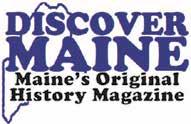





As the 1905 baseball season got underway in Maine, the Colby College team aimed to win the college league championship. The competition was limited, after all, because only four schools belonged to the league: Colby, Bates, Bowdoin, and the University of Maine.
Colby was the home team while playing non-league Taconnet on Saturday, April 22. Styled as “a practice game,” the event drew a decent crowd as “both teams showed up well,” and Colby won, 4-0. Despite the score, some fans thought the Colby players did not “have their batting togs on,” a sportswriter commented. The team fielded three pitchers — Thompson, Coombs, and Pugsley (first names sel-
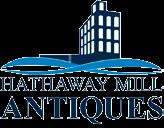

dom appeared in print then) — who combined to keep Taconnet from getting a hit. Coombs struck out all nine batters during his three innings on the mound.
Next up the Colby team played the Lewiston Athletic Association team at Alumni Field in Waterville on Thursday, April 27. The Lewiston boys had upended Bowdoin College, 6-4, the previous Saturday, but “were hardly in the condition” to play the fired-up Colby team, which demolished the Lewiston defenders, 21-3.
Thompson, considered a substi-
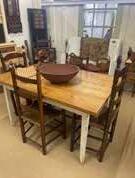



tute pitcher, went seven innings while shutting down Lewiston’s offense, and Coombs wrapped up the last two innings. Lewiston kept the game close until the fifth inning, when “a tornado struck the Lewiston lads.” The first Colby batter walked, the next batter “got a pretty bunt hit” and safely reached first base, and a Lewiston fielder “muffed” the third batter’s fly ball.
With the bases loaded, first baseman Willey nailed a grounder that drove in the two lead runners. Then Colby’s second baseman, Tilton, stepped to the plate, and as he swung at and missed a pitch, Lewiston’s catcher (York) threw wildly to pick off the second-base runner. Instead, two more Colby runners scored, more kept scoring in that inning, and the game was never in doubt afterwards.
Colby met Bowdoin in a league game on Wednesday, May 10. While “a good one to watch, except for people troubled with heart failure,” the game

featured “plenty of batting, good and poor playing mixed, and a mixture of lurid and daring base running.” A sportswriter thought “Bowdoin was fairly outplayed at all points of the game” and “Colby went to pieces badly at times,” yet hung on to win, 11-6.
The Colby team traveled to Brunswick on Saturday, May 20 to meet Bowdoin yet again. Pugsley started on the mound for Colby and promptly hit an opposing batter with a pitch. After walking the next batter, Pugsley gave up a single, threw the runner out at first base, and then gave up another single.
Bowdoin was up, 3-0, and two Colby errors and a base hit added another run in the fourth inning. Colby responded with two runs in the first inning and a third run in the fourth inning, but lost the game, 4-3.
Colby traveled to Orono to play the University of Maine on Saturday, May 27. Pitching for Colby, Coombs “had the Maine batters at his mercy, they not
having made a hit or a run.” Coombs nailed “a long home run,” a solo shot, in the fourth inning. In the sixth inning Colby’s lead-off batter struck out, the UMaine pitcher hit the next batter (Dwyer) with a pitch, and he promptly stole second base. The third Colby batter, Craig, got a hit that scored Dwyer. Coombs then cracked a single that advanced Craig to third.
Coombs tried to steal second, but UMaine’s second baseman (Moody) caught the throw from the catcher; standing in the base line, Moody collided with Coombs, whom the umpire called “out.” Moody then moved “to line the ball home to cut off Craig,” but “Coombs deliberately stepped in front of him, grasped or hooked him by the wrist in plain sight of everyone and interfered with the throw” that Craig scored.
Chaos erupted on the ball field as the UMaine coach, and two professors marched their players off the field to (cont. on page 46)




(cont. from page 45)
protest Coombs’ action. The protest stopped the game, which Colby won, 8-0.
Bates came to play Colby at Alumni Field on Monday, June 5. A “fast double play” got Coombs out of trouble in the first inning, and three innings later Tribou fired a fast and accurate throw from deep left field to catch a Bates runner right at home plate. Colby won, 3-2.
On Saturday, June 10, Colby traveled to Lewiston to play Bates, and “up to the last half of the eleventh inning the game was one of the best ever seen on a Maine diamond,” a sportswriter wrote. Again, on the mound for Colby, Coombs kept Bates from getting a runner to first base for seven innings. The Bates batters were certainly hitting the ball, but the Colby infield and outfield combined to catch every runner at first, and Coombs got two strikeouts. Tied 0-0 at the end of nine, the game
went into extra innings. In the last half of the eleventh inning, Colby left-fielder Tribou caught the lead-off batter’s fly ball. Bates’ leftfielder, Rogers, then reached first base on an error, and the next batter “poked one down to [shortstop] Pugsley.”
Rogers raced toward second base. Rather than step on the bag, Pugsley threw so wildly to Willey at first base that the baseball went “into the field beyond” the foul line. Willey chased the loose ball, but Rogers scored, and Bates won, 1-0, and eliminated Colby from a possible league championship.
For Colby, the “hits were lacking when needed,” a sportswriter observed.

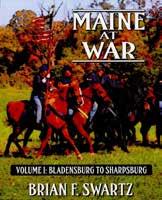





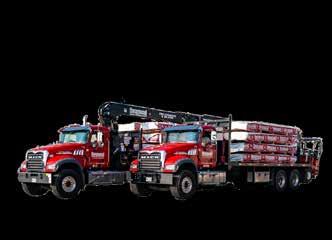


At about 7 a.m. on Sunday, December 7, 1941, 22-year-old Lafayette Cochran was just getting ready for breakfast. He and a fellow soldier had showered and were preparing to shave before eating.
Some of their U.S. army 35th Infantry, Company G, 24th Quartermaster Corps (“Pineapple Division”) buddies remained asleep in their bunks at Schofield Barracks, adjacent to Wheeler Field, not far from Honolulu and Pearl Harbor, Hawaii.
“I heard machine gun fire and said, ‘What’s that noise on a Sunday?’ My buddy said, ‘The Army practices, Sunday or no Sunday.’ But I looked outside




and saw the ‘Rising Sun’ on a plane,” said Cochran.
U.S. pilots often practiced bombing runs, he said, dropping bags of flour. “At first, that is what we thought the attack was,” he added.
Because there wasn’t enough room in the barracks, some men were bivouacked in tents adjacent to the buildings. “Japanese pilots came in low, strafing the tents and trying to pick off the guys as they ran,” Cochran remembered.
“I got to the First Sergeant and he said, ‘You’re a sergeant now. Get these trucks out.’ We tried to hide them under the trees and got them all out of the mo-





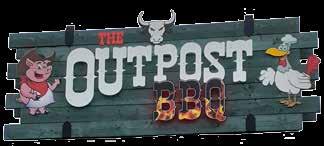


tor pool,” he said.
Cochran and his buddy Willard Huff ran to a supply room for ammunition. A General had ordered that no ammo was to be issued, but that order had been issued before the attack. A supply sergeant said they couldn’t have any.
“Huff knocked him down and we forced the locked door, pulling out a heavy wooden ammo crate. We weren’t going to be shot at without shooting back. The pilots would strafe us and fly so low we could see them laughing at us,” Cochran explained.
They pried the lid off and pounded with a screwdriver on the copper sheeting sealing the contents until they got it
(cont. on page 48)

(cont. from page 47) off. “I said, ‘Don’t you realize you could set it off?’ My buddy said, ‘Don’t tell me that. I’m scared enough already,’” Cochran said. Their ammo scavenging paid off. They fired at Japanese planes that were skimming the ground as low as six inches off the surface.
“Me and Willard Huff brought down one Japanese plane, firing 3006 steel-jacketed bullets through (antiquated) 1903 Springfield rifles. We fired as fast as we could push the bolt.” He noted that Huff was so angry when he ran out of ammo that he “threw his rifle at the second plane. A plane went over the barbershop and landed at the side of Wheeler Field. The pilot was dead. I was surprised at how tall they were,” Cochran said, remembering a total of 12 Japanese pilots who were buried without ceremony in a trench following the attack. “Not one was under six feet tall. If the guy who buried them isn’t still alive, I’m the only one
who knows where they were buried,” he said.
While the aerial attack was occurring, the airfield was also shelled from Japanese two-man subs, located just offshore. “I think they were aiming for the General’s headquarters and telephone exchange just beyond us, and our motor pool was caught in the middle. But we didn’t lose any trucks,” he said.
Cochran said that he and fellow soldiers had been well trained by a Major for wartime conditions, including driving through cane fields with their truck lights blacked out. Ironically, that same Major had been vocal in saying Pearl Harbor would be attacked and was reprimanded. But he was returned to the unit after the attack, Cochran said.
Cochran said members of his unit later chuckled at their bugler, who, instead of sounding the proper “Call to Arms” during the attack, blew a cavalry
charge.
After Cochran had moved trucks, he was sent to the General’s office and asked to relay messages to command posts hastily set up around the island. He remembers going to a division headquarters in a sugarcane field in the middle of the night, using the password “Washington.” The proper response was “Valley Forge.” Ironically, while sent to one field post he was dispatched from it to an unscheduled location and was briefly declared “Missing in Action” until he reappeared at the barracks.
Cochran said the threat of invasion was thought to be very real, “but everyone thought they were going for the States.” The next day a steady stream of trucks carried off wreckage from the attacks on the barracks, airfield, and Pearl Harbor.
Cochran remained in Hawaii until 1943 when he was shipped to Austra-









lia for further training and then inserted into the battle zones of the Pacific Theater.
The draft was being revved up in anticipation of war — before Pearl Harbor — and Cochran and a buddy had volunteered so they could have a choice of where they were sent. The operator of a car lot and grocery store in Livermore Falls for many years, Cochran had joined the Army shortly before hostilities broke out, and had shipped to Hawaii in June of 1941. “It was,” he stressed, “one of the best places to soldier — in peacetime. Now, I’m the only one left of all the guys I went in with. Most of us came home, but we’re getting older,” he added.
While in the Philippines Cochran was again mistakenly declared “Missing in Action” in the chaos, and now chuckles about it. “Leyte Island in the Philippines was the worst of it. This hand-to-hand stuff was not fun,” he
said. At Pinanopoon, Leyte Island, Cochran was among thirteen 24th Quartermaster Corps soldiers receiving a letter of commendation.
“Supplies were desperately needed by the troops in the area. These supplies could only be brought in by LCMs (landing crafts). These men clearly demonstrated their devotion to duty throughout the period of November 16th to November 19th of 1944, when, despite enemy shell and machine-gun fire, they continued to unload, transport, and stack supplies from LCMs at beach drops,” the commendation reads. “We were told we could have twenty-one rounds of ammo. I went up front with two hundred rounds. I didn’t fool around,” Cochran said.
Other recognition he received included the Distinguished Service Cross, Asiatic Pacific Campaign Medal with nine battle stars, American Campaign Medal, two Good Conduct Med-

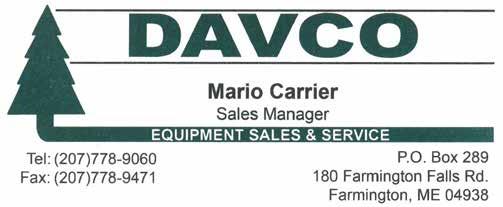
als, the Philippine Liberation Medal, World War II Victory Medal, the Driver and Mechanics Qualification Badge, and the Pearl Harbor Commemorative Medal, the latter authorized by Congress in 1990.
With one ammo run on Leyte Island, Cochran’s unit was tasked to drop off supplies by an old school house. The truck drove right by the structure in the dark and inadvertently wound up “way out front” (at the front). “We heard an artillery piece going off nearby and the lieutenant said to dig us a fox hole for the night. The other men got into a ditch for cover. When daylight came the lieutenant was jabbing my ribs, saying, ‘The Japanese have that gun.’ We rolled right out of there, backing up to the schoolhouse without a shot being fired at us.”
But he said the officer complained of the noise Cochran had made at night in the fox hole. “He said ‘That guy snores.
(cont. on page 50)


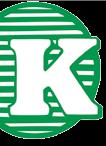
(cont. from page 49)
I’d poke him in the ribs and he’d just snore louder.’”
On another occasion, after trucks were driven onto an airfield, the drivers were informed it was in Japanese hands. This caused the unit to go ahead and take the airfield. Another time, Cochran’s unit was pinned down and he ducked behind a stump only to clink helmets with a Japanese soldier.
One memorable occasion occurred after three days of intense fighting. Mr. Cochran started walking down a road “feeling disgusted, tired and hungry. Three officers met me on the road and noted shots were being fired at me. I said it was a sniper in the woods. A Major got out in the road and the Japanese shot at him. He told me to fire back, but I couldn’t see the enemy soldier. But shortly afterward a G.I. appeared, marching the soldier down the road, hands clasped over his head.”

Cochran said, “You don’t talk about it. You don’t tell people exactly what you did in the war because they’d never believe you. For instance, a lot of people don’t believe you can shoot down a plane with a 30-06 round.”
Some of the menaces did not come from the enemy. Hawaii had no snakes


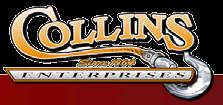

or wild animals to worry about, and if stung by centipedes or scorpions, you’d just swell up, he said. But in New Guinea, the Philippines, and other jungle battlefields, poisonous snakes, malaria carried by mosquitoes, the weather itself, and numerous other concerns regularly faced soldiers. Cochran recalled a 30-foot rock python that attacked a dog in camp. Soldiers pumped 132 bullets into it. “Some snakes were so big you didn’t dare run over them for fear they’d get caught in the truck. I came across a big black snake in the road, and waited for it to move.”
Cochran founded chapters for the Pearl Harbor Survivors Association in Maine and Massachusetts in 1959. Once meeting monthly, as time went by there were fewer and fewer members still alive and able to travel for those gatherings.


Bridge Street in Mexico. Item # LB2007.1.109749 from the Eastern Illustrating & Publishing Co. Collection and www.PenobscotMarineMuseum.org

Rooted in Oxford county.
Branching out into Androscoggin, Cumberland, Franklin, Kennebec, Knox, Lincoln, Sagadahoc, Somerset and York.
Let's grow together. 800.991.9219 |

Rumford’s first fire department of record came into being in 1895, organized by Chief Fred B. Carroll. Since the town was incorporated in 1800, there must have been some earlier fire fighting activities, perhaps a volunteer fire department, but those records simply don’t exist.
The first equipment was acquired through the Rumford Falls Village Corporation. In 1900 the Wigwam Hall association sold its building to the village for eight hundred and fifty dollars, and it became Rumford’s first fire station. By 1907 the department had seventy volunteers, one chemical engine, and a
hook and ladder truck. There were then sixteen fire alarm stations. It wasn’t until 1923 that the department moved into its Central Fire Station on Congress Street.
By 1935 Solomon A. Mercier had succeeded Carroll as chief, and motorized equipment had replaced most horse-drawn items. There were eighty call-men, a full-time chief, two assistant chiefs and four permanent drivers.
The fire department fell under a number of names over the years, including Rumford Falls Fire Department, Rumford Center Village Improvement Association and Rumford Point Fire As-

sociation, until all were brought under the Rumford Fire Department heading in 1951.
Rumford Center obtained fire protection in March of 1920 after a fire destroyed a parsonage, the Grand Army of the Republic hall, and damaged three other adjoining buildings. The fire destroyed a large collection of irreplaceable Civil War relics, including priceless battlefield relics of the 10th Maine, regimental flags, and captured Confederate banners that had been housed in the GAR Hall. Residents of all ages threw snowballs onto buildings to extinguish burning shingles, and a hasti-

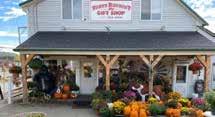


ly built dam was thrown together at a nearby brook to gather water for wash tubs, pails and other containers pressed into service as firefighting equipment.
After that fire, residents approved funding for a chemical truck built on a Model T chassis in 1925. It was stationed in a makeshift canvas and strapping garage near the location of Richardson’s Variety on Route 2. In 1926 Merton Colby was elected fire chief. Residents in Rumford Center were alerted to emergencies by the ringing of the church bell.
In 1947 forest fires ravaged the area and the Village Improvement Association petitioned the Town of Rumford for better protection. A surplus tanker truck was purchased with an appropriation of $1,000 at a 1949 town meeting. It was housed in a building which collapsed due to heavy snows in 1987. The company was disbanded in 1984 because of the more modern equipment


available from the central fire station.
The Rumford Point Fire Association was also organized in the 1920s, with a station built in 1929. Irving Cole became chief in 1925 and was succeeded by John Martin in 1933. The association acquired a motorized pump which was mounted on a four-wheeled trailer that could be towed by a vehicle. A handdrawn wagon and sled were constructed by Gerald Marston for this unit, and it is still featured in town parades. Other various vehicles were adapted for fire protection over the years, and residents would be alerted to emergencies by a siren at the station.
In 1977 a new two-bay fire station was built by members of Company 6 following the traditions of their forefathers. A pumper and tanker are still housed in this station, and Company 6 is still an active part of the force.
In 1951 a new town charter combined all fire control units in Rumford



under one chief. In 1958 Chief Mercier retired and was replaced by George A. Bulger. In the first years of the 21st century the force included thirteen permanent men, about fifty call-men, four pumpers, an aerial ladder truck, one utility/rescue truck, and a vehicle utilized by the fire chief.
The firefighters are occasionally called upon by other towns to provide “Jaws of Life” extrication equipment, and Rumford has mutual aid agreements with surrounding communities.
Former Chief Eugene Boivin developed a successful petroleum spill prevention and control plan, a cooperative effort between all area fire departments and the paper mill.
Rumford has not been spared the natural and man-made disasters that are common in the fire service. The first recorded major fire was a massive wood pile fire in the early 1900s associated with the paper mill.
(cont. on page 54)


(cont. from page 53)
There were major floods in 1936, the 1950s and 1987. Damage estimates of the 1987 flood were two to three million dollars for Rumford alone.
There have been line-of-duty fatalities, a huge oil storage tank fire, and a railroad chlorine tank car derailment about twenty-five years ago, which forced the evacuation of hundreds of residents.
But it was on August 2, 1923 that a fire on Waldo street caused the largest fire damage to Rumford, and necessitated the response of firemen and equipment from all over the state. Equipment was shipped up from Lewiston by rail to fight the blaze, which can only be termed a “conflagration.”
The disastrous fire apparently started when drying clothes hanging in the Majestic Theatre caught fire. The fire quickly involved the building and spread to adjoining structures, all of which were wood-framed and burned



rapidly. By the time firefighters were able to bring the blaze under control, twenty-two building on both sides of Waldo Street had been completely destroyed.
Including loss of fixtures and household belongings, the total loss was estimated at over a half million dollars — a significant sum in 1923. Among the buildings lost besides the Majestic Theater, there were four apartments, numerous tenement buildings, a barber shop, a bakery, two restaurants, and a power company building.
Another major fire occurred in 1931
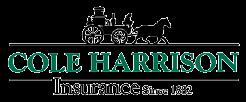
when the Rumford Falls Power Company building at Congress and Hartford Streets was gutted by fire for a loss of one hundred and eight thousand dollars — also significant for that Depression era.
Over the years, the response time has improved with modern technology. Now it is usually only the rural fires that can’t always be controlled before the total loss of a structure because hydrants and other adequate water sources are sometimes not available in these areas.




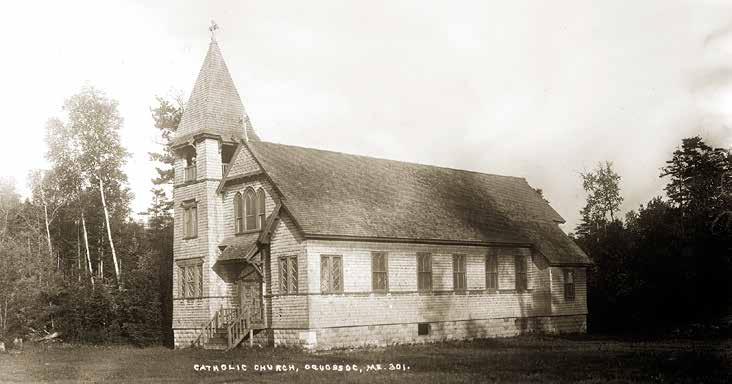




What does a Maine Commissioner of Fish and Game do on his off time? He ties flies. At least that’s what Henry O. Stanley, whose name most often appears as H. O. Stanley, did when he was home and not in Augusta or else off doing everything he could to promote Maine as a fly fishing Mecca.
Home for H. O. Stanley was Dixfield. He had a business there manufacturing flies and leaders. Stanley was one of Maine’s longest serving fish and game commissioners. This was back in the mid to late nineteenth century. You can find references to Stanley in any number of old books, magazines

and newspaper articles on the subject of hunting and fishing in Maine. Often as not his name is accompanied by that of his brother-in-law George Shepard Page.
H. O. Stanley and George Shepard Page were two of Maine’s first significant promoters of trout fishing as a sport. Some sources cite the two as


putting the Rangeley Lakes area on the fly-fishing map. There sources say they did the same thing for the lakes of the Androscoggin region.
Stanley and Page particularly like to fish for trout at Oquossoc. The results of that trip can only be described as phenomenal. The results were so outrageous in fact that the story got picked up by Boston papers. It also engendered a fair amount of critical comment, the sort that includes statements like “That can’t possibly be true.”
In summary, here’s the story: In eight days Stanley and Page caught 273 pounds of trout. The trout averaged three and one-half pounds. Page was


quoted as saying “All [the] fish were caught in fair play.” One wag commented “Trout fishermen must look out for their laurels.”
One noted authority of the period, a doctor by the name of Thaddeus Norris, clearly wanted to condemn Stanley and Page as liars. He didn’t, though he came close. Norris hedged just a bit by saying, if the fish were caught in the St. Croix River, it might be understandable. According to Norris, Schoodic trout from the St. Croix have been known to run this size. Norris had written of Schoodic trout, which he termed Salmo Gloveri, in his 1864 American Anglers Book. Though it isn’t all that clear what Norris meant by his Latin designation, one suspects he was talking about sea trout. Norris concluded his remarks saying “One who is not accustomed to mark specific differences, may have been easily deceived…”
That either Stanley or Page would have been unsure as to what they had caught is laughable. In the time period we are talking about here one would have been hard pressed to find anyone as knowledgeable on the subject of freshwater fishing in the country.
As to just how knowledgeable Stanley and Page were about trout fishing, the two were among the first, if not the very first, fishermen in Maine to push for the establishment of fish hatcheries. Stanley used his position as a fish and game commissioner to do just this. He wrote “With the constant fishing that
is now being done every year, without some supply except the natural crop, [trout] must continue to decrease til the fishing is gone.” Stanley wanted fishermen to pay for hatcheries. He called for “voluntary subscription to support the propagation of fish.” Today we see something of the sort with some of the uses fishing license fees are put to.
Would either Stanley or Page have backed down if they were to be faced with doubt to their fishing prowess at Oquossoc or elsewhere in Maine? It’s less likely, in fact it’s out of the question. On one occasion Page took a strong of eight Rangeley brook trout to a New York City anglers club. The string of eight weighed in at fifty-one and seven-eighths pounds. This was one of the promotions or displays both Stanley and Page were known for the sort that put Maine fly fishing on the map. The year Page made his trip to New York was 1863,
In the latter part of the nineteenth century Maine had three fish commissioners. In 1867 Charles G. Atkins and Nathan W. Foster were named commissioners. The two researched fish propagation in general and landlocked salmon in particular. They began collecting eggs from landlocked salmon and working to fertilize and hatch them. Atkins successfully used the dry method of egg gathering for both salmon and trout, fertilizing close to 100 percent of the eggs he gathered.
One of H. O. Stanley’s pet projects
was the establishing of a fish hatchery for western Maine. He even had his own small hatchery at his home in Dixfield. He also maintained a much larger hatchery for the purpose of stocking lakes and streams in the Rangeley area. He maintained it at his own expense and had hired a man to tend to it. This hatchery was at Rangeley’s Mountain View House. In Part Stanley’s efforts led to the 1889 creation of a state fish hatchery for both salmon and trout at Craig Brook in Orland.
In 1895 a new law allowed the Maine Commissioners of Fish and Game to purchase or lease land for fish hatcheries. They purchased the Caribou and Auburn hatcheries, concentrating until about 1900 on raising landlocked and Atlantic salmon, and then adding several types of trout. A state-run hatchery like the Auburn hatchery or one like it had been H. O. Stanley’s particular longtime dream. In fact, it might be looked upon as a Stanley family dream.
The Auburn Fish Hatchery went into operation in 1896. John F. Stanley, a brother of H. O. Stanley, was the first superintendent of the Auburn hatchery. John Stanley was regarded as one of the foremost experts on the breeding of fish in the United States. The hatchery prospered under his management. One newspaper called it “the showplace of the county.” According to another report, visitors numbered in the thousands in the summer months.
In the nineteenth century most fish (cont. on page 58)

(cont. from page 57)
were stocked as fry in Maine lakes. For the most part, hatcheries did not feed fry for long. By the end of the nineteenth century hatcheries were feeding fry before releasing them, hoping to increase the survival rate. They often used ground beef livers and spleen, sheep organs, grasshoppers, and various types of fish as feed. Changes like these in fish breeding and stocking procedures came about because of research into hatcheries like those at Auburn.
There is a good deal more to the history of early fish hatcheries and the development of fly fishing in Maine than that noted in this brief piece. However, anyone researching the subject would clearly do well to begin with the work of H. O. Stanley and George Shepard Page and John F. Stanley.
Note: The specific designation for Maine’s commissioners associated with fish and game changed a number of times during the nineteenth century.
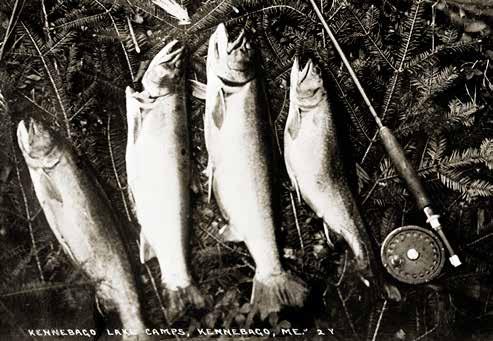
H. O. Stanley and others holding the same or similar positions had a variety









he day the Thresher vanished off the New England coast, so did a light plane in northern Piscataquis County.
Only one disappearance had a happy ending.
Shortly after 9 a.m. on Wednesday, April 10, 1963 the submarine U.S.S. Thresher submerged into the Atlantic Ocean about two hundred and twenty miles east of Boston. Launched at the Portsmouth Naval Shipyard in Kittery and commissioned on August 3, 1961, the two hundred and seventy-nine-foot nuclear attack sub had one hundred and
twenty-nine men aboard after completing a refit at the shipyard.
At 3:55 p.m. the same day, Millinocket residents Eugene Legassey and J.C. Preble took off from the Millinocket Municipal Airport for a brief flight to Greenville. Legassey, who owned a Millinocket flying service, was piloting a ski-equipped plane. He figured the trip to Greenville would take some thirty-five minutes.
During their morning test dives, the Thresher’s crew had communicated with the Skylark, a submarine rescue vessel that had accompanied the




Thresher on her voyage. Surface conditions were not unusual for New England waters in early spring — a partly cloudy sky, a wind running at twenty-five to forty knots, and seas running from five to nine feet.
Legassey and Preble had launched into snow squalls, which would not deter the experienced pilot. The wind was blowing hard, of course, but such weather appeared normal for Maine in early spring.
The Skylark monitored communications with the submarine, which had dived into waters some eight thousand (cont. on page 60)



(cont. from page 59)
feet deep. The sub’s crew reported their position at 41.44 north and 64.57 west.
Minutes later, with the clock not even reading 10 a.m., the Skylark lost contact with the Thresher
Late that afternoon, Legassey and Preble disappeared en route to Greenville.
Wednesday, the Navy announced that the Thresher, the first submarine in her class, was “overdue and presumed missing… While there is a possibility that the nuclear submarine has not reported her position due to a communication failure, a search was immediately commenced by the Navy in accordance with emergency proceedings for such situations.”
Word reached state authorities in Augusta that a plane was overdue in northern Piscataquis County. Darkness had fallen so a search had to wait until morning. Crews and vehicles converged on Greenville.

Navy vessels sailed toward the Skylark throughout the night. The search would involve many aircraft and would last several days. Even as frightened relatives awaited official confirmation, a saddened Admiral George Anderson, the chief of naval operations, announced on Thursday, April 11th, that “very reluctantly I have come to the conclusion that the Thresher has indeed been lost.”
The Thresher had sunk with all hands.
Anxious friends and relatives also awaited word about Legassey and Preble throughout Wednesday night. Pilots familiar with the rugged region speculated that hampered by the bad weather, Legassey had landed on a frozen pond to wait out the snow squalls.
Searchers intended to launch their first aircraft by mid-morning on Thursday. Suddenly, a voice broke over a search radio. The call came from a man


driving a logging truck. The conversation remains conjectured.
“You guys looking for a missing plane?” the trucker probably inquired.
“Yes!” the radio operator likely replied.
“Well, I just talked to them fellas as I was goin’ through Kokadjo, and they said to tell you they was all right and will be arrivin’ in a little while,”
Around 9 a.m. searchers heard an aircraft droning toward Greenville. Minutes later, Legassey set his plane safely onto terra firma, and word quickly spread that he and Preble were okay.
The weather had indeed troubled the two aviators. “The weather was pretty squally, and we tried to get around it. When we couldn’t, I landed at Kokadjo on First Roach Pond” about 4:45 p.m., Legassey told his friends.
The two men waited for the snow squalls to abate. As the weather worsened, Legassey and Preble decided not



to complete their journey. They spent the night in an unlocked camp and flew out the next morning after contacting the truck driver by radio. He, in turn, stopped atop a hill and passed the message to searchers.
Legassey and Preble had found a phone, but it was locked up. “We didn’t want to break into the building,” Legassey explained. “As far as we were concerned, we were in fine condition, but I was alarmed about letting my wife know where I was. All we could do was just sit there.”
“This was only the second time in twenty years. Usually, I’m able to get where I want to, or at least let someone know where I am,” Legassey said.
So the news was good that Thursday morning In Greenville. In Kittery, a pall had settled over the submarine base. Two aviators had flown to safety in Piscataquis County, but the Thresher would never return.
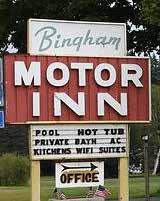
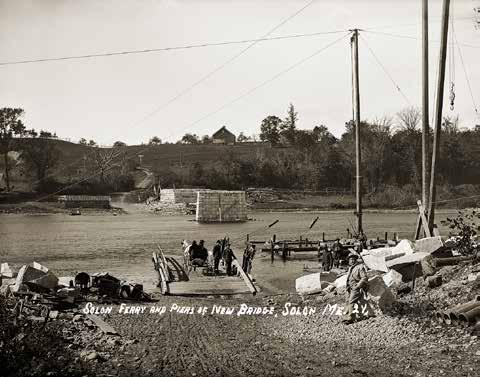




Let’s face it, cusk aren’t the prettiest. What you’ve got, really, is a kind of eelish, lumpy catfish hybrid wrapped in a mucous skin. Throw in the fact that they’re more lurker than swimmer, hang out in deep water, and absolutely love freezing temperatures and you, my friend, have entered the upside-down world of the cusk. Did I mention they only come out at night?
A freshwater cousin of cod, Lota lota by way of scientific name, they also go by loche, lawyer, eelpout, or sometimes lingcod — although that species is more akin to the salt water rockfish —which leaves things as usual with these topsy-turvy critters about as

clear as Pluto on a cloudy night.
But you can’t mistake it for anything else. Overlooked as a gamefish (because they are not), cusk are usually caught chasing a bait meant for others. Anyway, here in Maine, any fish that goes by the name of ‘lawyer’ is bound to suffer from angler neglect. Let’s just say it’s a misfit fish with delicate flesh that reaches impressive sizes.
They’re not much for moving about either, but keep in mind that movement can be a relative term. For a cusk, going 10 feet classifies it as active. One study recorded average stationary times of 24 hours, with one individual inert for 11 days, which sort of makes it kind of a
fishy couch-potato champion! Mostly they rouse themselves at night and only for food. It is a peculiar cusk fact that they go all numb and listless in warm summer water but in the clutches of winter they’re practically leaping about. The difference, of course, lies in mating.
Most freshwater fish enter a semi-suspended state called torpor in frigid conditions. Leave it to them ‘pouts to go all frisky as the ice begins to form. Spawning on rock or gravel ledges in 25 feet of water can draw hundreds into a writhing ball that undulates over the bottom. Females might produce three million eggs and the fin-
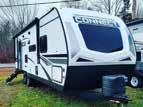


ny weirdos can “sing,” a kind of raspy tune easily heard on the surface. All this frenetic courtship understandably ceases around midwinter, although they may frolic for weeks after ice-out in some of the deeper lakes.
As cod do, cusk have a swim bladder that helps to maintain neutral buoyancy at different depths; it also means they can suffer from the fishy “bends” if brought to the surface too fast. Some call it a fish with character, and all of it bad. Yet, those odd characteristics are important adaptations to the cold dark conditions at the bottom of northern lakes. Either way, they certainly stir mixed emotions. There’s that appearance, for one. With blunt squashed heads, beady eyes, flabby bodies, and a downturned mouth full of sharp tiny teeth, they won’t be winning you beauty contests. Besides, they’re slimy as all get-out, and then there’s that long fleshy feeler that hangs from their chin
called a barbel that somehow resembles a soul patch.
While you won’t swoon over their looks, they do have a certain foppish charm. After all, once caught, the roguish fellow might very well try and wrap himself around your arm or your leg! Essentially ice-age throwbacks that swam in a glacial world, cusk left scattered remnant populations behind when the ice finally retreated. Spawning in freezing cold temperatures made all that slime and flabbiness important protections. Big eyes aren’t necessary in the gloomy depths, so the barbel serves for detecting vibrations and locating prey. Voracious predators, cusk need those small needle teeth to catch a variety of food: fish, frogs, birds, snakes, just about anything else that crosses their path, are all items on the menu. And so, it would seem that our slippery sinuous cusk is, after all, perfectly suited to its chilly and murky existence.
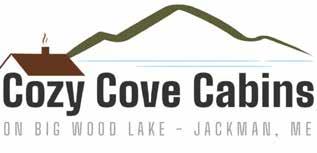
Still, suspected of outcompeting walleyes, lake trout and other popular sportfish some areas post unlimited harvesting of their numbers. Alas; poor cusk rank near the bottom of fish targeted by Mainer winter fishers. Unperturbed, it keeps its own counsel. Little is known of their daily routine or habits, and that preference for deeper water, random movements, and night predation make it a baffling kind of a species. Even the scientists who are anyway predisposed toward the cute and cuddly at the expense of the bald and ugly find it confounding.
Chilly water and sluggish metabolism allow the cusk to creep its troubled and troubling presence under cover of ice and darkness across the bottom snarfing up food for a good 20 years. There’s also a secret redeeming value: it’s delicious! Known as “the poor man’s lobster,” it makes an excellent chowder, and good bait for other (cont. on page 64)



(cont. from page 63)
fish. The Maine record of 18 pounds 8 ounces hardly stands up to storied but believable weights and lengths of 50 pounds at nearly four feet.
Fishing needn’t stop during the winter. Opportunistic feeding patterns make this fish easy to catch. They’re apt to take a baited lure jigged from the bottom because a bit of churned up sediment will always attract their attention. Moosehead Lake offers some excellent ice fishing. With Mount Kineo looming over that fabled landscape it can seem like a calendar card come to life. Best to drill where a rocky outcropping sits about 15-20 feet below the surface nearby a sharp drop-off where the fish can hide. Kineo’s lee side is especially popular during rough weather, and where the deepest water lies. Avid ice anglers often employ their traps at sunset before pulling an all-nighter.
To arise from a warm and comfy bed on a numbingly cold morning to
Family owned Florist, Greenhouse & Garden Center 144 Madison Ave., Skowhegan (207)474-2892 www.boyntonsgreenhouses.com
Knowledgeable staff to help your garden grow!
Garden Center open May through September 5 Greenhouses with annuals, perennials, vegetables & more


drive many miles over dark roads slick with ice simply to have a go at fishing admittedly takes a considerable doing,

but the rewards are worth it. Just break the ice, leger a smelt, and reel yourself in some excellent memories!

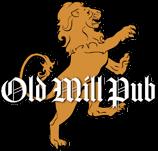
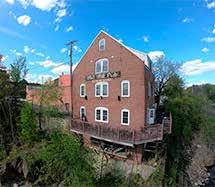
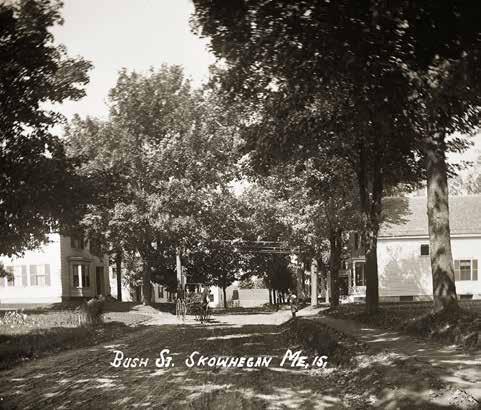








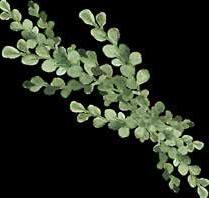
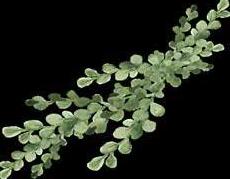








Arelic of the past sits on the banks of the Kennebec just below Teconic Falls in Winslow. Few residents of the immediate area give it much more than a passing glance as the roads going by it are generally full of cars on their way to and from the bridge that connects Winslow to Waterville. Yet at one time this relic, bearing the somewhat pretentious name of Fort Halifax, was considered the last line of defense during the French and Indian War.
All that remains of Fort Halifax is a single blockhouse. This single blockhouse, however, was once part of a sprawling military complex which in the late 1750s and early 1760s housed

some one hundred thirty officers and enlisted men. It was originally looked upon as the most important of three forts designed to protect the settlements of the Kennebec Valley from the dep-


redations of the French and their Indian allies. This was at a time when the whole region was a frontier and territory contested by the two superpowers of the time, Britain and France. The other two forts were Fort Western at Cushnoc, as Augusta was then called, and Fort Richmond further down the river.
A brief look at the history of the fort tells us that it was erected at the order of Governor Shirley of Massachusetts in 1755. As such, it was the only refuge for the hardy settlers just beginning to move up the Kennebec beyond the mouth of Messalonskee Stream. The fort was laid out under the supervision of General Winslow and a contingent of eight hundred men in 1754. At the


same time the fort was being laid out, a road was cut through the wilderness to it from Cushnoc. The next year Captain William Lithgow, who had been stationed at Fort Richmond, took command. Lithgow was succeeded by Captain Ezekiel Pattee. In 1763 Fort Halifax, which had never been attacked by either the French or the Indians, was abandoned. Today, however, the Fort Halifax blockhouse, which is all that remains, is one of the most significant landmarks in Maine.
The reason why the Fort Halifax blockhouse is so significant is that it is the only wooden fortification remaining in Maine — and possibly the entire country — constructed in pre-Revolutionary times. To view the blockhouse is to view the product of the skills and labor of carpenters of a time long past.
One of the carpenters who worked on Fort Halifax was a man named Phineas Stewart. Thanks to him we have
an incredibly detailed sketch of what the entire complex, which included a stockade, barracks and several blockhouses, looked like.
The main part of the fort, which was down on the river bank, took the form of a stockade enclosed square. The southwest and northeast corners were dominated by blockhouses. The southeast corner had the sentry box and the remaining corner the eightyfoot long, twenty-foot wide barracks. In addition, there was a storehouse and armory. Two smaller blockhouses on Fort Hill, which today is the site of a small shopping center, overlooked the main part of the fort. It must have been an impressive sight for anyone to view for the first time as they approached after traveling for miles through dense woods. Obviously the French and their Indian allies thought it so because they never chose to attack it. Today, however, all that remains of the complex is the



single blockhouse, but that blockhouse is an invaluable structure recalling, as it does, the craftsmanship and demands of a bygone era.
The two-story blockhouse, along with the garrison house, was one of the most familiar landmarks in the towns of early Maine. Most were constructed of logs and featured loopholes on both floors. Its most unique feature was the second story which projected several feet out over the first. This design made it possible for defenders on the second floor to fire directly down through loopholes in the floorboards at attackers on the ground that might be trying to force the door or set fire to the exterior walls. Because it otherwise looked like a perfectly square log cabin — a few were octagonal — most people think its name came from its blocky shape. This was not the case, however.
The term blockhouse relates to the blocks of wood that fitted perfectly into (cont. on page 68)


(cont. from page 67)
tray-shaped loopholes in the walls and floor of the house itself. Each block had a long wooden handle with a cord through a hole at the end. The cord was attached to the wall or floor. When a rifleman was reloading, he thrust the block back into the hole to block incoming bullets or arrows. When he had reloaded he pulled the block out by its cord. It was an ingenious system designed to fit circumstances requiring an absolute minimum of motion and as short a period for action as possible.
Today the last Fort Halifax blockhouse stands where it was originally constructed on the spit of land where the Sebasticook River joins the Kennebec. For many years it was cared for by the Fort Halifax Chapter of the Daughters of the American Revolution. Today it is owned by the State of Maine and stands as a unique testimony to the past.



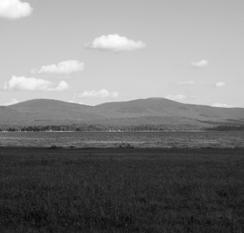


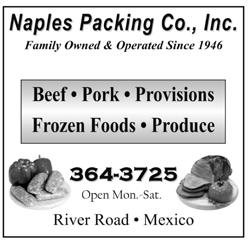
When there are events of major historical significance, most of us that lived through those times have memories deeply ingrained. As we talked, Sylvio Lecours found his thoughts wandering back to V.E. (Victory in Europe) Day, which was declared May 9, 1945. The surrender documents between the victorious Allied Forces and Nazi Germany were actually signed on May 8th, with all hostilities to cease in Europe at 12:01 a.m. on May 9th, the Rumford resident explained.
When peace was declared, Tech. Sgt. Sylvio Lecours was assigned to a U.S. Army Air Force ground control communications station at Kitzingen


Airfield, Germany, near the Austrian-Czechoslovakian border.
“The airfield had just put up its one hundred and forty-five P-47 fighters, and everyone who could fly, including the commanding officer (a General), was in the air for the celebration,” Lecours remembered. “We were ruling the skies in Europe by that point anyway, with very little opposition.”
At about 8 p.m. on May 8th, the radar picked up seven “bogies” (unidentified aircraft) approaching. In flew three German Stuka dive-bombers and four FW-190 fighters with 40-mm cannon. They had flown their last mission over the Russian front, which by then was

the border of Germany itself, but the pilots were afraid to surrender to the Russians for fear they would be shot. “The seven aircraft started circling the field. A lieutenant came up to me and said, ‘Col. Garrett wants to see you.’ I was told to go to the (air traffic) control station to call our planes back with the report of seven bogies over the base,” Lecours said.
The U.S. aircraft had gone up and formed a tight “U.S.A.” formation in celebration of victory, and when they returned to the field, formed an umbrella over the seven German aircraft, forcing them to land. With the war declared over in Europe, no one really (cont. on page 70)

(cont. from page 69)
had the desire to shoot them down, as they had obviously flown to turn themselves in. “But what angered us was that they came in and tried to destroy their aircraft by crash landing — all except a pilot who had hidden his wife or girlfriend in the cockpit. He landed. The pilot of the one-seat fighter had removed his communications gear so that she could squeeze into an area the size of a footlocker. This pilot had apparently relied on hand signals with the other pilots. We had to use metal cutters to get her out of the aircraft,” Lecours continued.
On the ground, U.S. airmen found they also had none other than Oberst (Colonel) Hans Ulrich Rudel in their midst. Rudel, then twenty-nine years of age, was Germany’s highest decorated soldier, earning every gallantry award the Nazi state could offer including the Golden Oakleaves, Swords and Diamonds, to the Knight’s Cross, an award

made specifically for him. Rudel had flown 2,520 combat missions, and his final score included five hundred enemy tanks destroyed, one battleship, one cruiser and one destroyer sunk, and seventy craft sunk or damaged — mostly in the battle against the Soviet Union. Twenty-six of his tank kills were made when flying with only one leg because injuries from a crash had required amputation. Among the other Germans surrendering was a Major with one leg and an arm missing. With peace declared, Lecours noted there were still half a million German soldiers in Czechoslovakia, and he was assigned to a U.S. disarmament team.
“They were hiding out in the woods and had reformed military units because the Germans found if they surrendered to the Czechs or Russians, they were shot immediately. We (the U.S. team) went out with food and played Bing Crosby in German. We were throwing a
party, and nobody was coming until we played Lily Marlene. Then they were crying all over the place,” Lecours said. He said German officers who surrendered to his group in Czechoslovakia gave important information about the location of a fuel refinery for the feared German V-2 rockets. U.S. forces were able to take possession of the refinery before the Russians, who were also very much interested in capturing this technology.
Lecours had been drafted before Pearl Harbor and had his physical on December 10, 1941, just three days after the Japanese attack on Pearl Harbor. He went into the service on January 5, 1942, on a day that he remembered was eight degrees below zero in Rumford. “Robino’s Store was giving out coffee and donuts at no charge, and the band played for about sixty men in the predawn hours,” Lecours said. The men came from Rumford, Hanover, Dix-

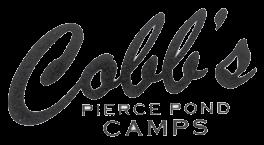


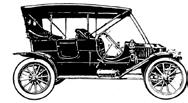
field, Upton, and surrounding areas.
Lecours found himself in the Army Air Force, and was sent to a flight control course in a U.S. Navy school, and trained at the University of Wisconsin before being sent overseas. He joined the 510th Fighter Squadron, 405th Fighter group of the Ninth Air Force. He attended another communications school in Inverness, Scotland, at a big base for the British Lancaster bombers. These bombers were known as “Blockbusters” because they could carry a twelve thousand-pound payload. He was in England during the Battle of Britain. He was a flight controller during D-Day (June 6, 1944) and the day after, and personally talked two pilots back in when their aircraft were shot up over the landing areas in Normandy, France. “Those two pilots then toured other bases to show airmen damaged aircraft could make it back,” Lecours said.


Lecours described his WWII experiences as “many days of boredom and a few minutes where your life is on the line,” such as when he experienced Germany’s bombing ‘Blitz’ on London. He said radios were very efficient, explaining that if an aircraft was at thirty thousand feet, London could communicate with the plane over Berlin, some 750 miles away. Some memories are not pleasant. July 22, 1944 is etched in Lecours’ mind as one of the hardest because it was the day his “Wolfpack” (squadron call sign) commanding officer Bruce F. Parcell was killed over France.
“It is an instant replay in my memory. The formation was operating under radio silence when he broke that silence, calling, ‘I’m hit, I’m hit, I’m hit! I’m going down.’ And that was the end. Parcell is buried in the Normandy cemetery,” Lecours said.
“Many things happen in wartime.

Some make people a hero when they didn’t intend to be, and some make them a coward. Everyone is made up of a little of both,” Lecours continued. In France, Lecours and a group of fellow soldiers came across a group of villagers preparing to execute five of their own, whom they declared had been collaborators with the occupying Germans. “I spoke to them in French and fired one shot with my .45 (caliber pistol). The drivers, who had circled around, each fired a machine gun burst in the air. We declared that there would be no executions this day, and took the five men into custody. When they later went before a judge, all five were released,” Lecours said. He said the amazing thing to him was that one of the villager’s intent on executing the men was the brother of one of the prisoners. Another time he was told not to do anything when he witnessed Russian soldiers raping a German woman.
(cont. on page 72)

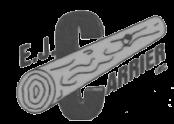

(cont. from page 71)
War is not pretty.
An extremely unpleasant memory was Lecours’ visit to the Nazi Bergen-Belsen concentration camp at the end of the war. “I met men who weighed sixty-five pounds and couldn’t keep anything down. We had to feed them baby formula. If this was Rumford, you would start to smell the camp at Canton or Hanover. The crematoria gave off a distinctive odor you never forget,” he added.
When the war ended, Lecours was offered an opportunity to be the air attaché in the capital of Brazil but turned it down. He said he had had enough of government service and was longing for home (Rumford). In l995 he went back to France as part of a trip sponsored by the Ninth Air Force Association to attend the 50th-anniversary observance of D-Day. Lecours was among the U.S. soldiers reissued the Croix de Guerre medals by grateful French and Belgian governments.





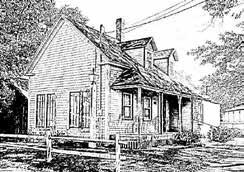


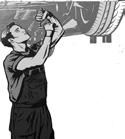


Charles "Charlie" Laurance Humphrey Francis, age 80, of Lower Wolfville passed away June 10, 2023, in the Valley Hospice, Kentville. Born October 1, 1942, in Portland, Maine, USA; he was the son of the late Henry Russell Francis and Marguerita (Woods) Francis.
Charlie was first and always a teacher. He grew up in the Unitarian Church. He was also a voracious reader in the fields of science, theology, literary critique, and popular history. Genealogy was a strong interest. He became a regular contributing writer for Discover Maine Magazine, sharing articles on the popular history of Maine for over 20-years until his death.
Charlie earned degrees from the University of Massachusetts at Amherst; Mount Allison University in New Brunswick, where he obtained a degree in Canadian Studies; and University of Maine at Orono, where he earned a Master of Science Degree in Education. After his studies, Charles taught first in Mars Hill, Maine, USA. He then continued teaching at NYA in Yarmouth, Maine, USA, and at Searsport District High School where he taught history and English, was involved in curriculum development and coached cross-country.
Following retirement in 1990, Charlie moved to Monroe, Maine, USA, where he served as Chair of the Selection Board. In the early to mid-1990s, he served aboard the light ship “Nantucket”. His interest in the history of his community was shown in his leadership in restoring the Civil War statue in Monroe. His fascination with Canadian history led him to Halifax and his Howe family connection.
Charlie fell in love with his wife’s country and became a proud and fervent citizen of Canada in 2002. Together they were the owners of his “Shangri-la” near Annapolis Royal. He delighted in living in the heart of Canada's birthplace. Nature and the environment were his sources of spiritual connection. Gardening, daily runs, which in later years became daily walks, fed his joy.
Charlie is lovingly remembered by his wife, Mary Lou Rockwell of Wolfville; daughter, Sarah Francis of Gray, Maine, USA; grandchildren, Curtis Austin and Margaret (Maggie) Austin of Gray, Maine, USA; special first cousin, Jack Woods, Peapack, New Jersey, USA; and Jetta the Cat of Wolfville. Cremation has taken place and in accordance with Charlie’s wishes, there will be no service. Memorial donations may be made to the Valley Hospice in Kentville or The Lodge That Gives in Halifax (1-888-939-3333). Arrangements have been entrusted to Serenity Funeral Home,
(902679-2822).
Discover Maine Magazine is published eight times each year in regional issues that span the entire State of Maine. Each issue is distributed for pick up, free of charge, only in the region for which it is published.
It is possible to enjoy Discover Maine year ‘round by having all eight issues mailed directly to your home or office. Mailings are done four times each year. Name Address Phone

18 Below..........................................................................................................43
1890 Primitives................................................................................................72
A La Mexicana..................................................................................................30
A-1 Seamless Gutters.......................................................................................25
ABC Pool & Spa Center.....................................................................................16
ABT Plumbing, Heating & Cooling...................................................................47
Affordable Well Drilling Excavation & Forestry.................................................19
Alan's Automotive Incorporated.......................................................................32
Andrew Ames Logging.....................................................................................13
Azul Tequila Mexican Restaurant & Bar..........................................................27
Back Office Solutions of Maine.........................................................................45
Barclay's Skindivers Paradise............................................................................22
Barker Tree Service & Logging.........................................................................38
Bay Haven Lobster Pound & Restaurant...........................................................32
Bean Maine Lobster..........................................................................................14
Bear Belly's Tap & Table....................................................................................53
Beaulieu Garage Doors.....................................................................................66
Bethel Area Chamber of Commerce..................................................................13
Betty's Laundry.................................................................................................35
Bingham Motor Inn & Sports Complex............................................................61
Boards Under My Feet......................................................................................45
Bob's Cash Fuel.................................................................................................72
Boos Heating Company....................................................................................37
Boynton's Greenhouse......................................................................................64
Brill Lumber......................................................................................................11
Brookside Food & Drink....................................................................................28
Burke Quarry, LLC.............................................................................................33
Cantrell Seafood 2............................................................................................18
Carrabassett Valley Anti-Gravity.......................................................................71
Castonguay Meats.............................................................................................41
Central Maine Community College..................................................................23
Chalet Moosehead Lakefront Lodging..............................................................60
Chuck Wagon Restaurant.................................................................................40
Clark Auto Parts...............................................................................................72
Cobb's Pierce Pond Camps................................................................................70
Cole Harrison Insurance...................................................................................54
Collins Enterprises............................................................................................50
Colonial Valley Motel.......................................................................................50
Computer Improvements..................................................................................65
Cooper Farms....................................................................................................38
Copy Kat's Printing & Design..............................................................................8
Corsetti's - Westbrook.......................................................................................28
Cote's Transmission............................................................................................4
Coulthard's Pools & Spas..................................................................................52
Country Corner Inn...........................................................................................62
Countryside Auto Body & Repair........................................................................6
Covenant Heating.............................................................................................56
Cozy Cove Cabins..............................................................................................63
Cushing Construction.......................................................................................42
D&R Paving & Sealcoating.................................................................................9
D.A. Wilson & Co. ...........................................................................................38
Dan's Automotive Repair & Sales....................................................................69
Davco Equipment Sales & Service.....................................................................49
Den's Automotive Services, Inc. ....................................................................11
Design Architectural Heating...........................................................................19
Devaney Doak & Garrett Booksellers...............................................................67
Dirigo Engineering............................................................................................45
Dirigo Federal Credit Union..............................................................................16
Dirigo Waste Oil................................................................................................44
Don's No Preference Towing..............................................................................6
Doolin’s Pub......................................................................................................24
Double T Fence.................................................................................................12
Dyer Septic Service & Excavation.....................................................................37
E.J. Carrier, Inc. ................................................................................................71
Ed Hodsdon Masonry, Inc. ................................................................................7
Ed's Grove Discount Warehouse........................................................................30
Emerald Janitorial............................................................................................22
Evergreens Campground & Restaurant..............................................................4
Fairlawn Golf Course........................................................................................26
Farmington Farmers Union & Union Rental......................................................67
Fine Line Paving & Grading..............................................................................63
Foothills Flooring & Tile....................................................................................37
Franklin Savings Bank......................................................................................48
Franklin-Somerset Federal Credit Union............................................................4
G&G Cash Fuels................................................................................................24
George's Banana Stand....................................................................................64
Giberson Funeral Home....................................................................................63
Gray Family Vision Center.................................................................................26
Gray Shop 'N Save.............................................................................................26
Greater Bridgton Chamber of Commerce.........................................................33
Greg's Auto Repair............................................................................................73
Gridiron Restaurant & Sports Pub....................................................................18
Grimaldi Concrete Floors & Countertops.........................................................40
Griswold's Country Store & Diner.....................................................................61
Guff's Grub & Pub............................................................................................30
Guild Mortgage - Debbie Bodwell...................................................................23
Hall Implement Co. .........................................................................................30
Hammond Lumber Company...........................................................................46
Hardys Motorsports..........................................................................................73
Harris Drug Store..............................................................................................59
Harvest Gold Gallery.........................................................................................38
Hathaway Mill Antiques...................................................................................44
Heart & Hand Inc. ..........................................................................................33
Highland Farms Logging, LLC..........................................................................10
Highland Lake Resort......................................................................................35
Hilton Garden Inn Auburn Riverwatch............................................................22
Hodgdon Well Drilling, Inc. ..............................................................................5
Homestead Realty............................................................................................24
J.P. Carroll Fuel Co. ........................................................................................10
J.P. Clarke Plumbing Services.........................................................................53
J.R. Nunes & Sons Excavation..........................................................................53
Jackman Auto Parts.........................................................................................71
Jackman Power Sports.....................................................................................60
Jay-Livermore-Livermore Falls Chamber of Commerce....................................13
Jean Castonguay Excavation Trucking & Logging.............................................41
Jimmy's Shop 'N Save......................................................................................72
Joel Torrey Painting.........................................................................................70
Jordan Lumber Co. ..........................................................................................54
Judd Goodwin Well Company.........................................................................59
Junction Bowl..................................................................................................27
JW Awning Co. ..................................................................................................6
Kersey Real Estate............................................................................................49
Kezar Realty.....................................................................................................38
Kimball Korp....................................................................................................69
Kim's Garage & 24 Hour Towing Service.........................................................67
Korhonen Co. ...................................................................................................40
Kramers Inc. ....................................................................................................46
Kyes Insurance.................................................................................................49
Kyle Gunzinger - Medicare Specialist...............................................................44
L.R. Nadeau Inc. Excavation............................................................................24
Lake Region Trailers.........................................................................................33
Lakes Region Power Systems...........................................................................58
Laney's Pit Stop...............................................................................................64
Langlois' Collision Center Inc. ..........................................................................19
Larsen's Electric...............................................................................................69
Lavallee's Garage.............................................................................................72
Law Office of Brian D. Condon, Jr, Esq. ...........................................................24
Leighton's Garage............................................................................................31
Liberte Auto Sales...........................................................................................18
LifeFlight of Maine...........................................................................................14
Lincoln Street Radiator Shop.............................................................................4
Linkletter & Sons, Inc. ......................................................................................3
Lisbon Community Federal Credit Union.........................................................18
Luce's Meats & Maple.....................................................................................62
Maine At War...................................................................................................46
Maine Dept. of Inland Fisheries and Wildlife...................................................25
Maine Family Federal Credit Union.................................................................19
Maine Historical Society....................................................................................5
Maine Pellet Sales LLC.......................................................................................6
Mainely Puppies Plus, LLC...............................................................................11
Mainely Veterinary Dentistry...........................................................................30
Maine's Northwestern Mountains...................................................................53
Maple Valley Pharms.......................................................................................43
Marston Industrial Services Inc. .....................................................................44
Mason's Carpentry...........................................................................................68
McAllister Accounting and Tax Services...........................................................13
McNaughton Construction...............................................................................45
Mel's Raspberry Patch.....................................................................................32
Mid Maine Chamber of Commerce..................................................................42
Mike Wainer Plumbing & Heating...................................................................65
Mills Market.....................................................................................................69
Ming Lee Chinese Restaurant..........................................................................42
Mingo Springs Golf Course..............................................................................55
Moosehead Cedar Log Homes..........................................................................60
Moosehead Motorsports..................................................................................59
Morton & Furbish Real Estate & Vacation Rentals...........................................57
Mount Blue Motel............................................................................................50
Mountain Greenery Greenhouses....................................................................13
Mountain Valley Variety...................................................................................53
Naples Packing Co., Inc. .................................................................................68
Native Maine'ah Pellet Stove Services............................................................20
North Camps....................................................................................................59
Northeast Laboratory Services........................................................................66
Norway / Paris Soft Serve.................................................................................12
Old Mill Pub Restaurant...................................................................................64
Oquossoc Grocery.............................................................................................58
Otis Federal Credit Union.................................................................................41
Our Village Market...........................................................................................70
Oxford Casino......................................................................................back cover
Oxford Federal Credit Union............................................................................51
Oxford Hills Chamber of Commerce................................................................11
Packard Appraisal LLC......................................................................................36
Pa’s Tradin’ Company.......................................................................................36
Pawz & Clawz Petz............................................................................................8
Peck's Family Acupuncture..............................................................................31
Penobscot Marine Museum.............................................................................15
Percy's Tire & Auto Repair LLC........................................................................10
Phil Carter's Garage.........................................................................................66
Pine Acres Disc Golf Course..............................................................................21
Pine Tree Orthopedic Lab.................................................................................39
Pitcher Perfect Tire Service..............................................................................46
Poland Spring Preservation Society.................................................................25
Pork Chop Tree Company.................................................................................32
Portland Veterinary Emergency and Specialty Care.........................................29
Presidential Pest Control..................................................................................16
Profenno's Restaurant & Pub...........................................................................29
Quinn Hardware...............................................................................................63
R&B's Home Source..........................................................................................62
R.E. Lowell Lumber Inc. ..................................................................................41
R.W. Day Logging...............................................................................................9
Range Pond Campground..................................................................................7
Rangeley Electric..............................................................................................56
Rangeley Friends of the Arts............................................................................56
Rangeley Lakes Chamber of Commerce...........................................................54
Rangeley Region Sports Shop..........................................................................71
Rangeley Saddleback Inn.................................................................................58
Rangeley Vacation Rentals...............................................................................56
Rare Woods USA...............................................................................................48
R.C. McLucas Trucking Inc. .............................................................................33
RDA Automotive.................................................................................................5
Record Building Supply, Inc. ...........................................................................12
Richard H. Lewis & Son Building & Remodeling..............................................11
Richard Wing & Son Logging Inc. ...................................................................27
Ricker Hill Orchards...........................................................................................39
Rita's Catering..................................................................................................66
Rita's House of Pizza........................................................................................66
River Valley Chamber of Commerce................................................................69
River's Edge Sports...........................................................................................55
Rod's Cycle & RV...............................................................................................62
Ron's Market....................................................................................................68
Ron's Transmissions............................................................................................7
Roopers Beverage & Redemption....................................................................17
Rottari Electric....................................................................................................7
Route 26 Antiques & Flea Market.....................................................................36
Roy's All Steak Hamburgers & Golf Center.......................................................21
Russell & Sons Towing & Recovery...................................................................37
S.A. McLean, Inc. .............................................................................................32
Sackett and Brake Survey Inc. .........................................................................65
Sarge's Sports Pub & Grub...............................................................................55
Seahorse Lounge..............................................................................................52
Sebago Lakes Region Chamber of Commerce...................................................8
Seth McCoy's Excavating.....................................................................................9
Shenn Corp. Landscape & Hardscape................................................................39
Sidecar Wine • Whiskey • Tapas........................................................................27
Sky High Tree Service.......................................................................................31
Smile Again Dentures, Inc. ..............................................................................19
Smile Solutions of Maine.................................................................................42
Smokin' Good Times ME..................................................................................73
Solon Corner Market........................................................................................64
Southside Tavern..............................................................................................73
Spencer Group Paving, LLC...............................................................................39
Spencer Pond Camps........................................................................................61
Springbrook Golf Club......................................................................................25
Stanley Museum...............................................................................................70
Sterling Electric.................................................................................................46
Stevens Electric & Pump Service Inc. .................................................................6
Strong Hardware & Building Supply................................................................70
Stultz Building..................................................................................................31
Sturdy Hardware...............................................................................................21
Styling Dog Grooming Boutique........................................................................5
Sun Auto & Salvage.........................................................................................73
T&L Enterprises.................................................................................................71
Tangeré Massage Therapy and Wellness............................................................9
Taste of Waterville............................................................................................42
The Bankery & Skowhegan Fleuriste................................................................65
The Black Horse Tavern.....................................................................................36
The Chapman House........................................................................................23
The Cote Corporation........................................................................................24
The Farmhouse Beer Garden............................................................................48
The Good Life Market.......................................................................................29
The Lost Gull Fish N' Chips...............................................................................35
The Lure Restaurant.........................................................................................52
The Maine Real Estate Group...........................................................................28
The Meadows Golf Club...................................................................................24
The Outpost BBQ..............................................................................................47
The Sterling Inn...............................................................................................59
The Sugarbowl Family Entertainment.............................................................54
The Tribune Books & Gifts................................................................................12
The Village Donut Shop & Bakery....................................................................7
Three Lakes Storage Units................................................................................67
Todd's Discount & Gift Shop............................................................................52
Town of Bridgton..............................................................................................34
Town of Carthage.............................................................................................68
Town of Farmington.........................................................................................47
Town of Mexico................................................................................................49
Trail's End Steakhouse & Tavern.......................................................................71
Vintage Maine Images........................................................................................5
W.L. Sturgeon, Inc. .........................................................................................10
Webster Tree Service........................................................................................21
Western Maine Glass........................................................................................11
Whited Truck & Equipment Center...................................................................21
Whittemore & Sons Outdoor Power Equipment...............................................65
Willie's Electrical...............................................................................................47
Willie's Towing....................................................................................................8
Wilson Excavating, Inc. ...................................................................................12
Wilson Funeral Home.........................................................................................3
Wilsons on Moosehead Lake............................................................................62
Winslow Supply, Inc. .......................................................................................67
Woodlawn Rehab & Nursing Center.................................................................65
Wood-Mizer of Maine.......................................................................................68
Woodsome’s Feeds & Needs................................................................................8

Maine’s home for wicked good fun, with 24/7 casino action and our convenient hotel and pub!
Experience round-the-clock casino action on our expanded gaming floor, featuring exciting table games and nearly 1,000 slot machines! With over 100 hotel rooms and a pub-style restaurant offering the best in Maine and New England cuisine, we’re building excitement every day!

